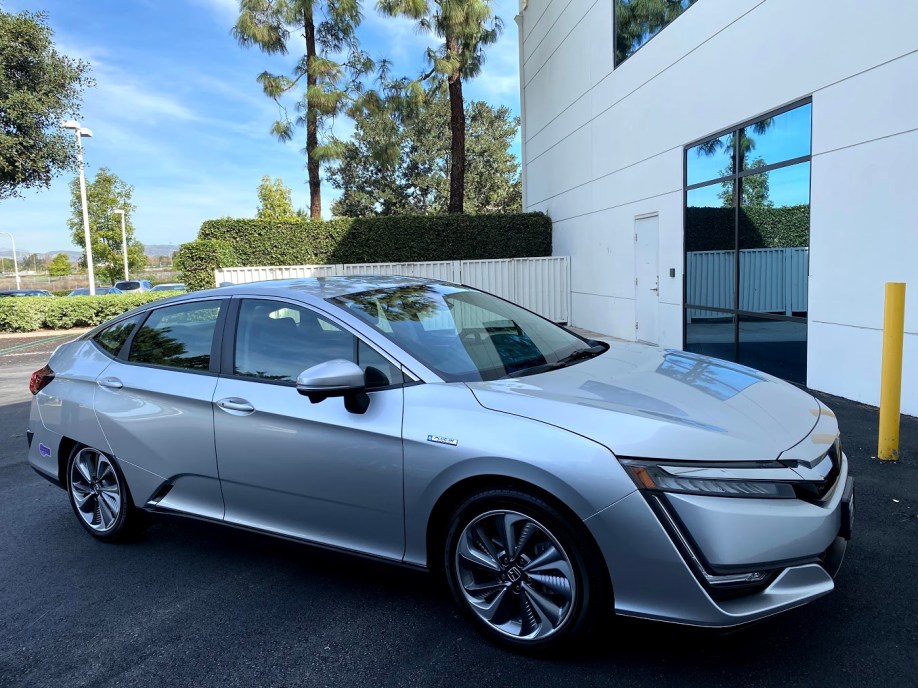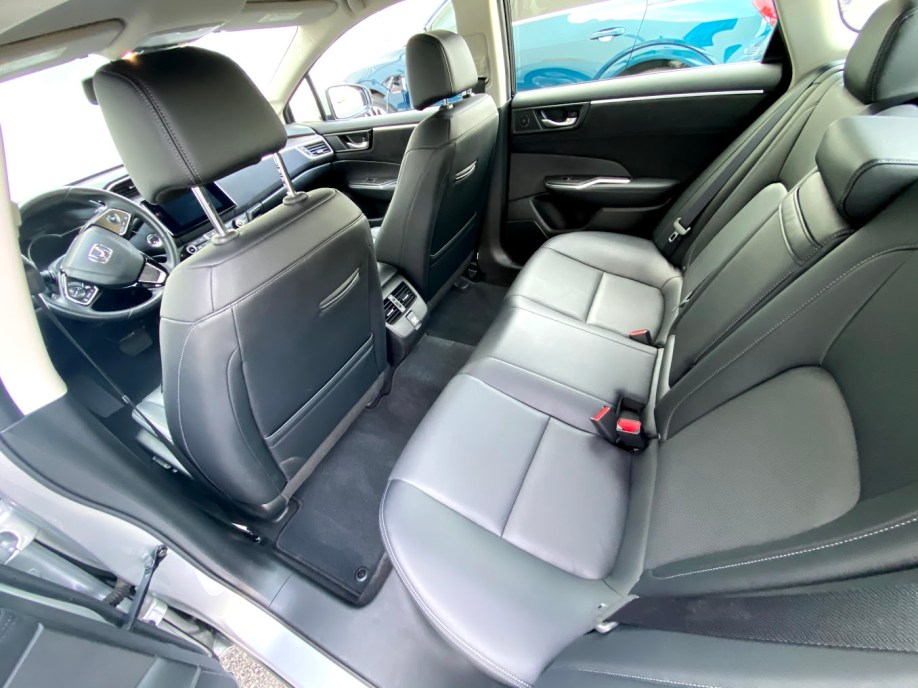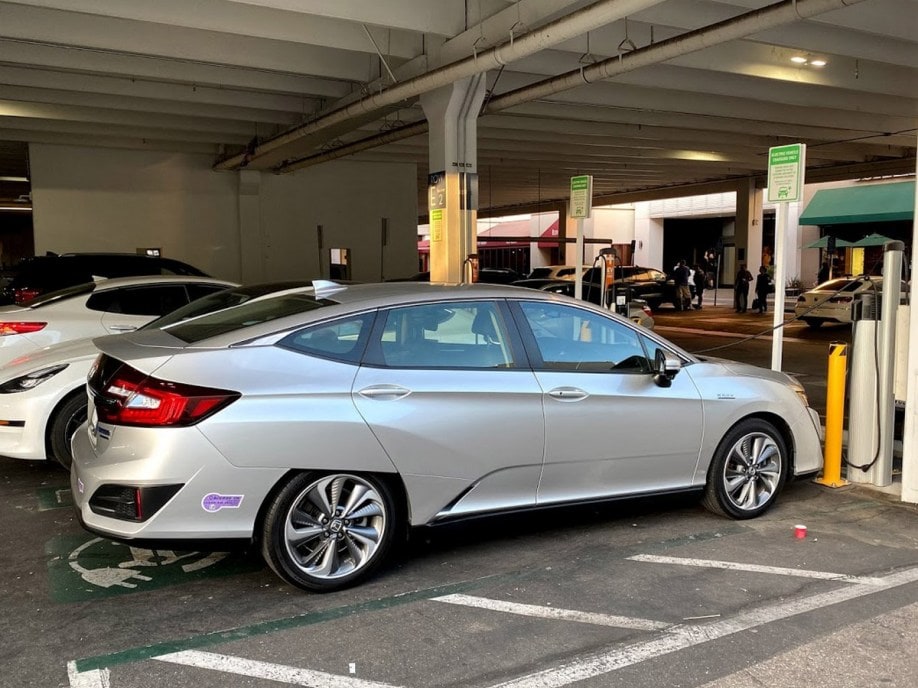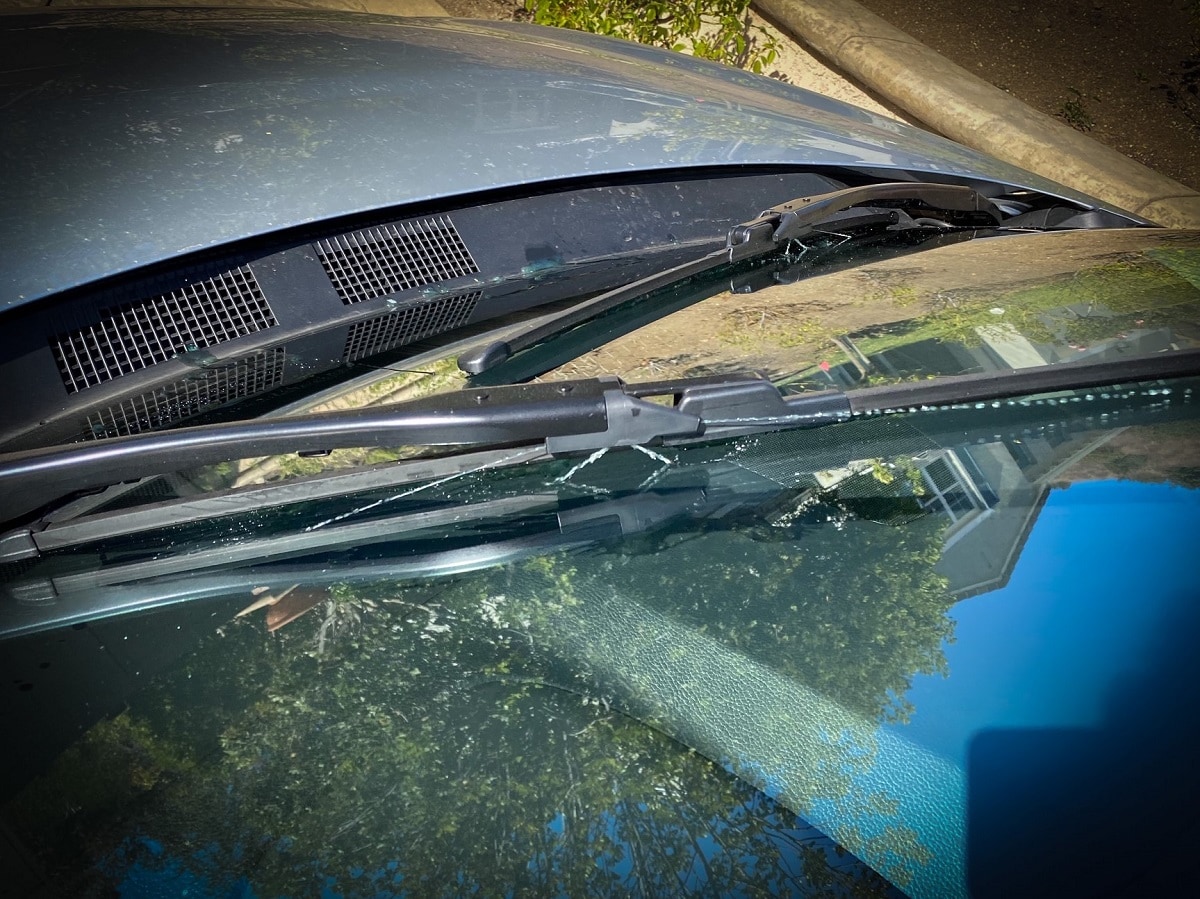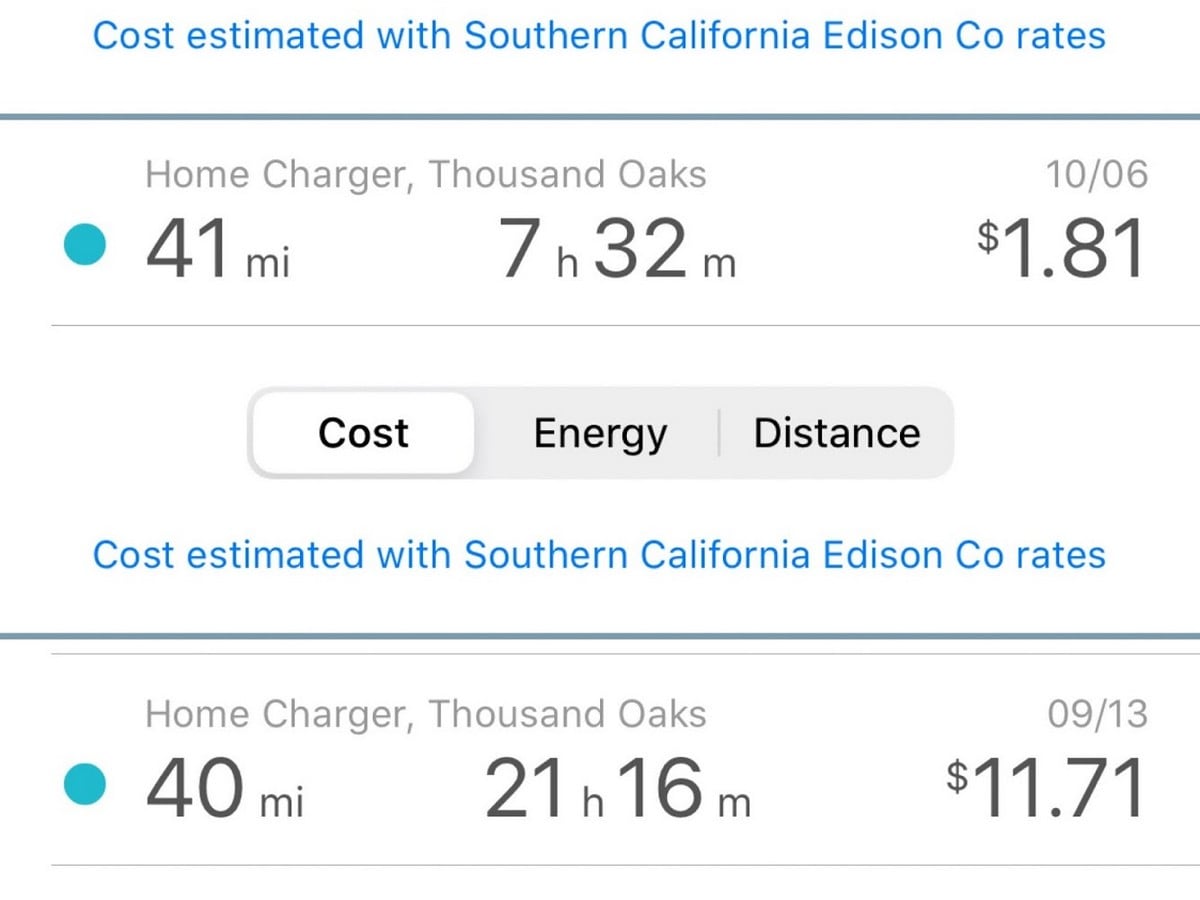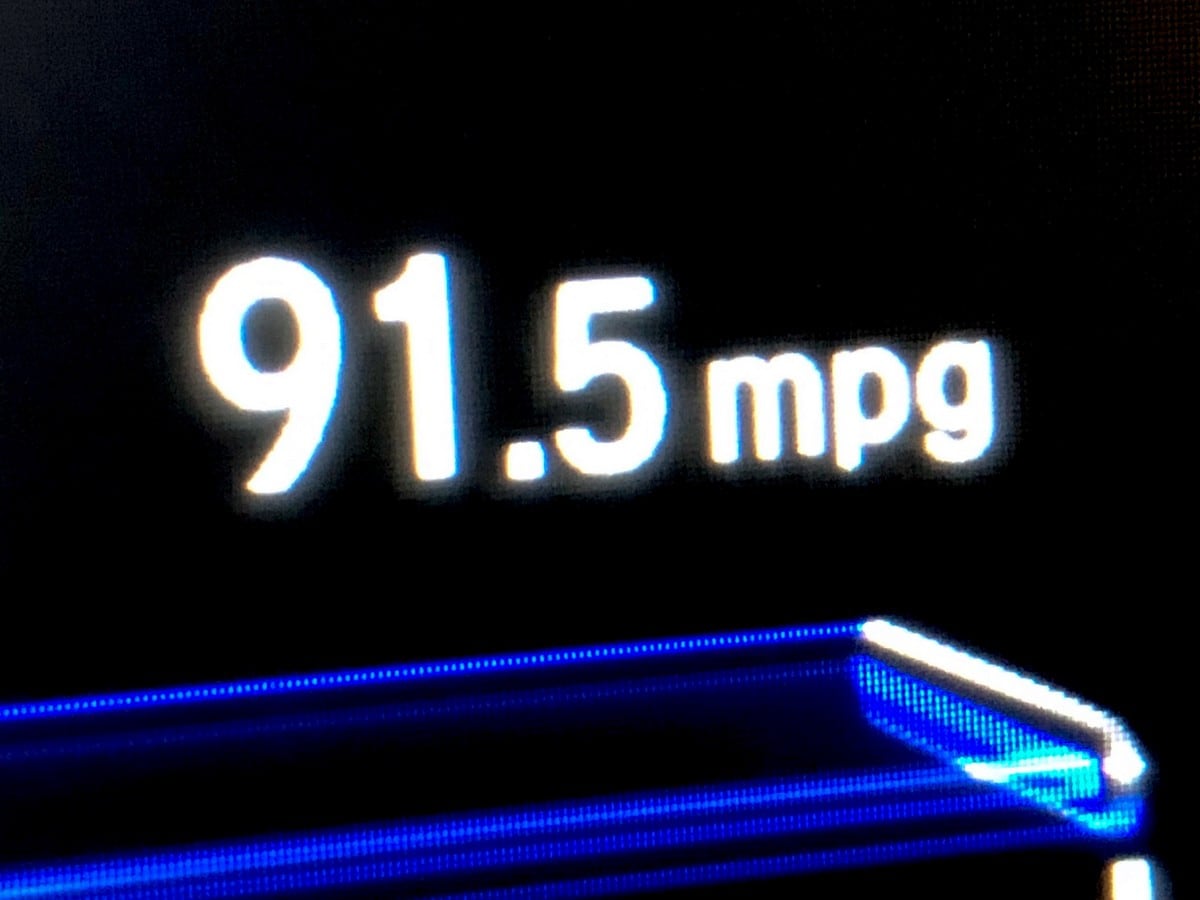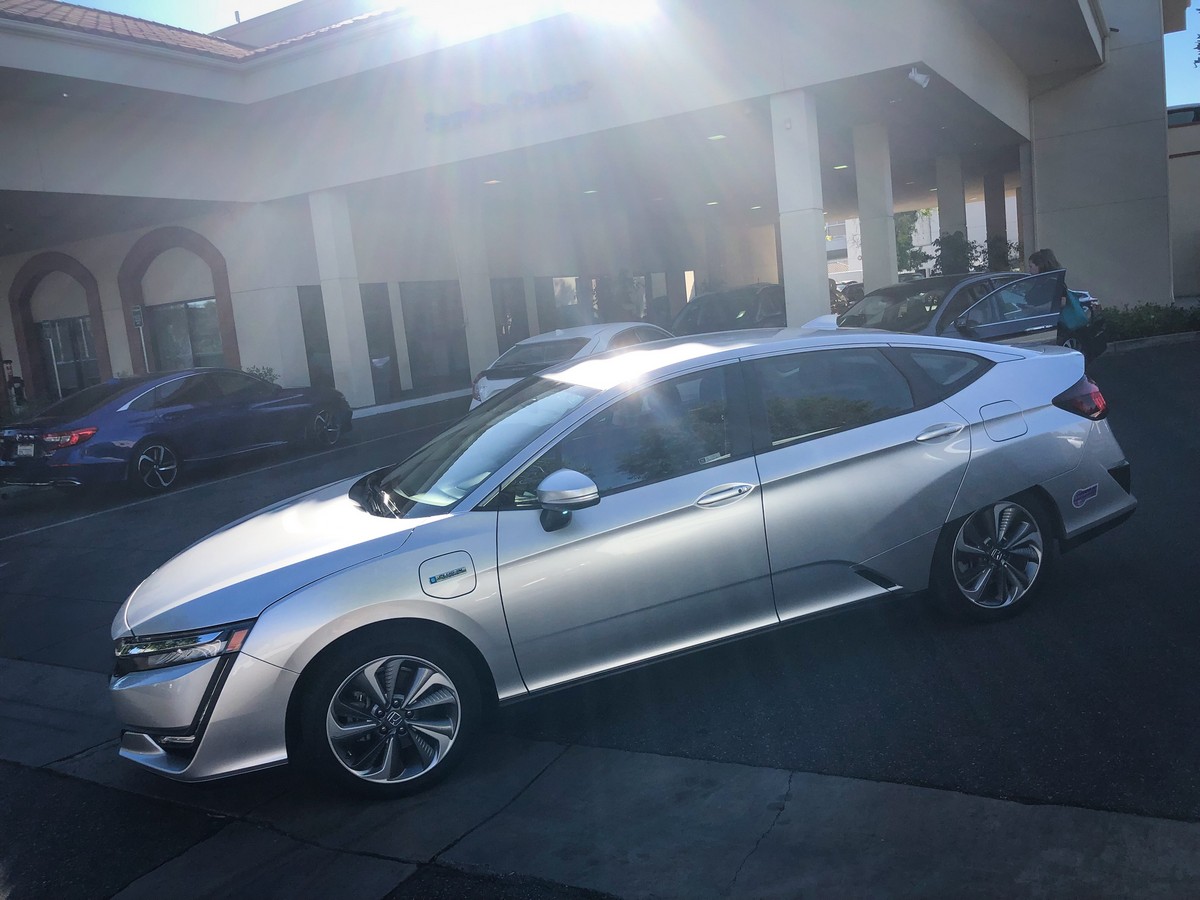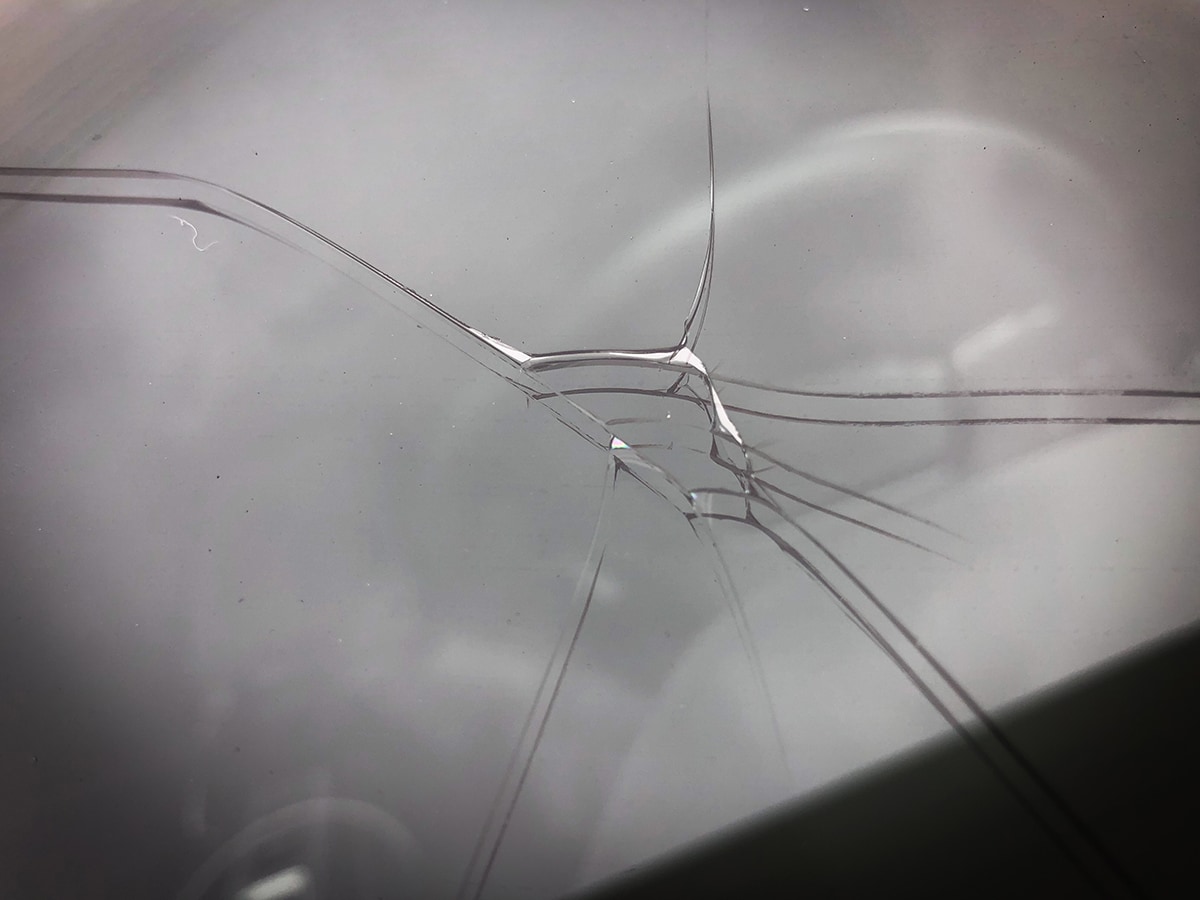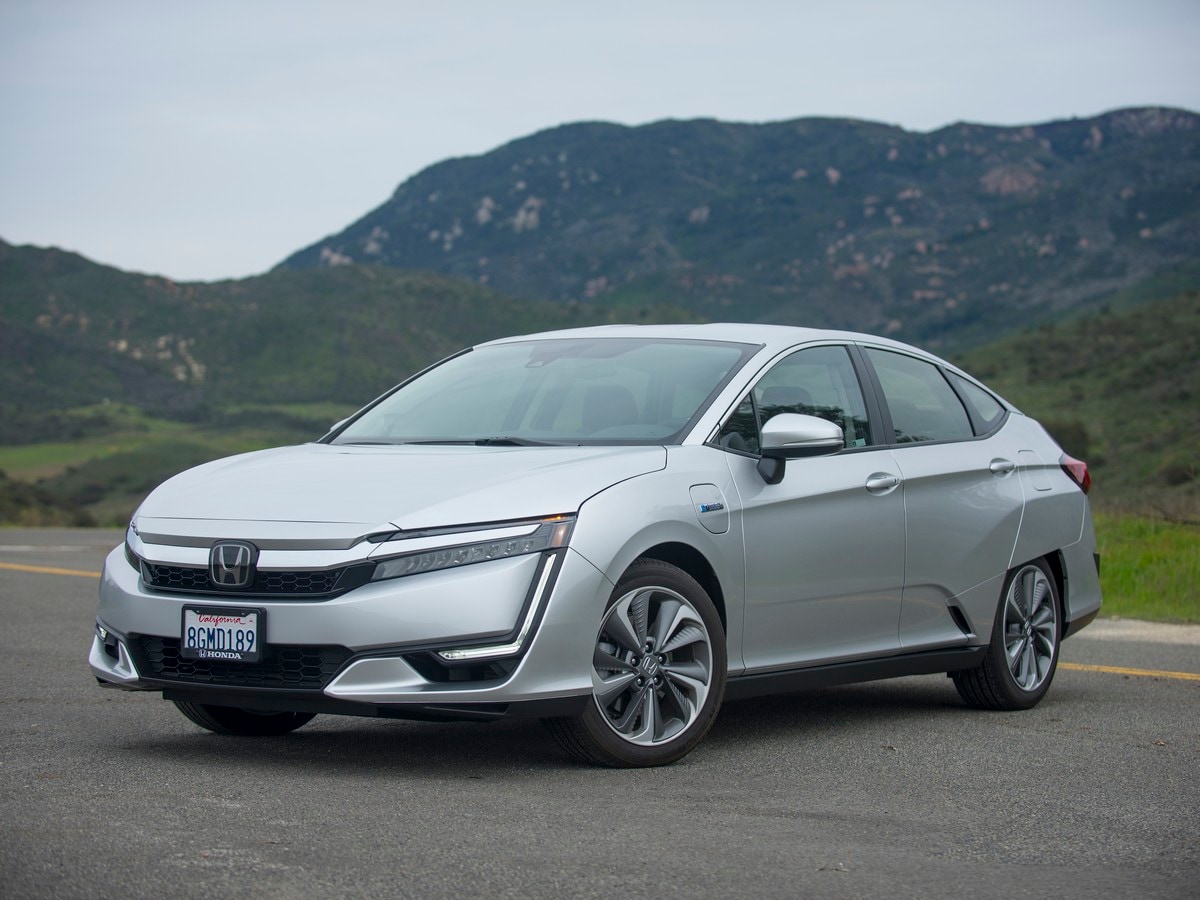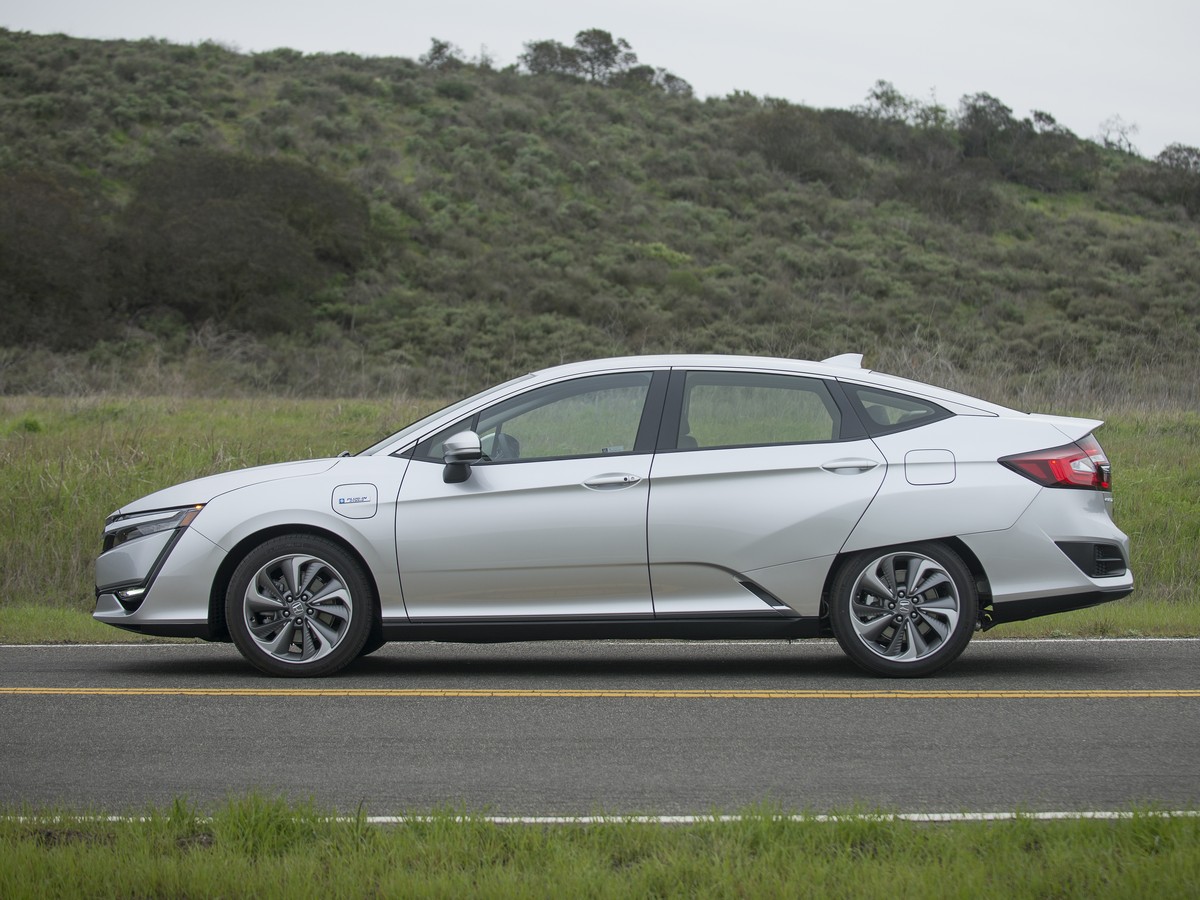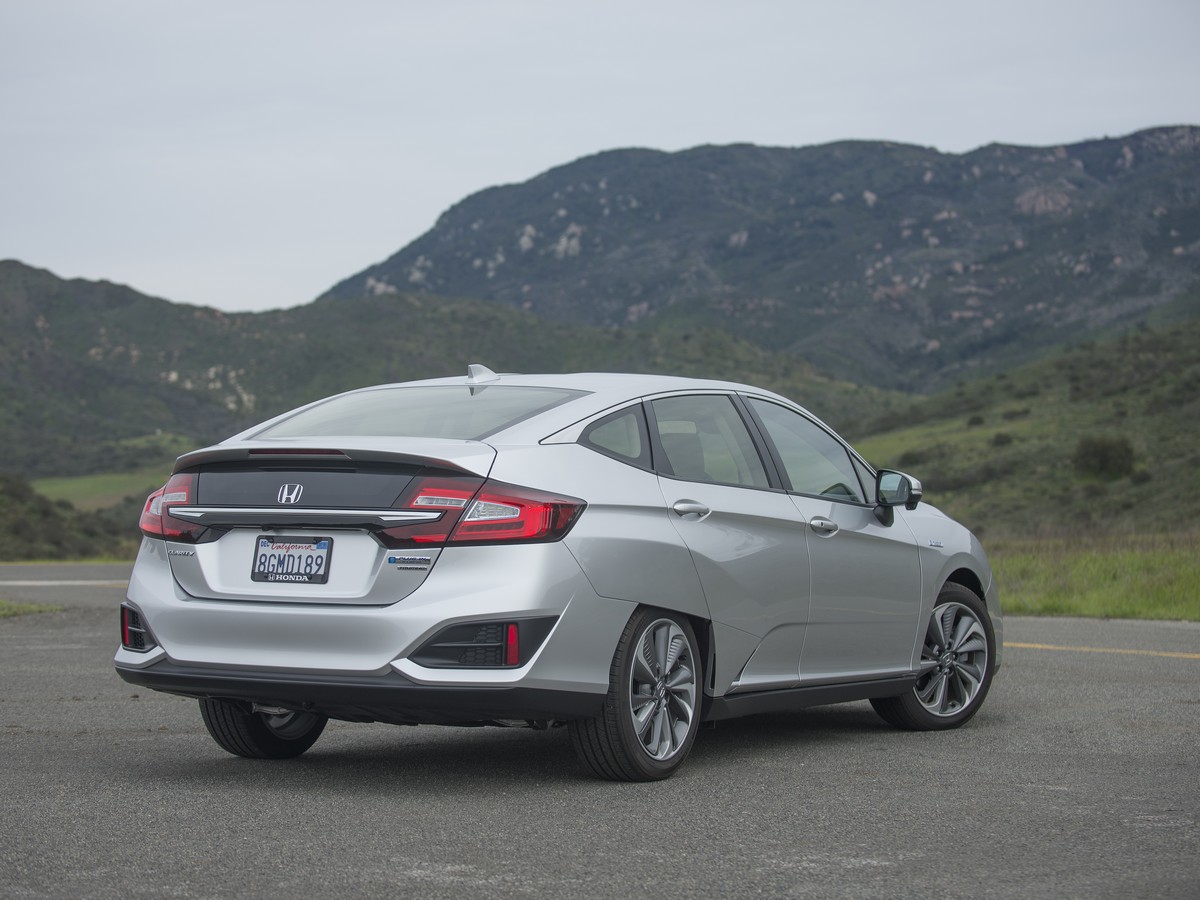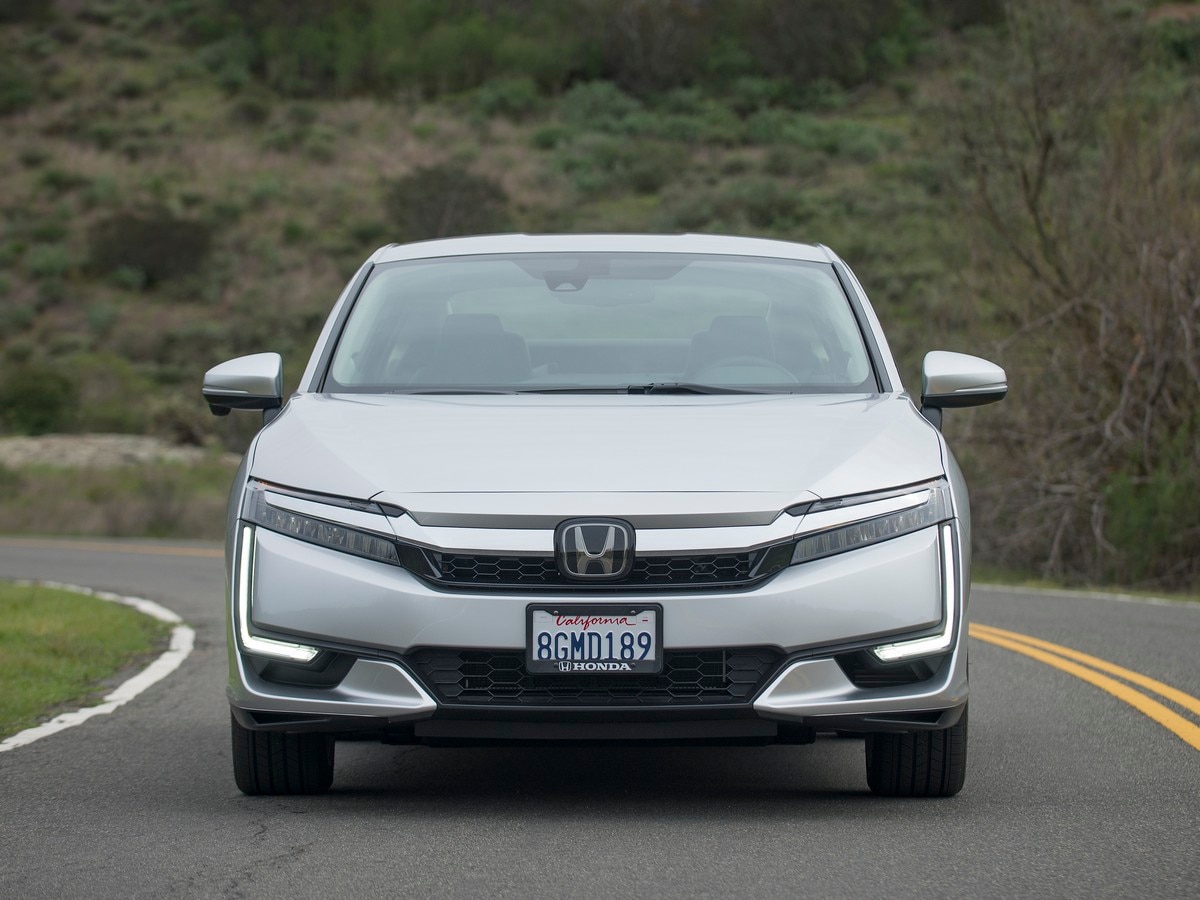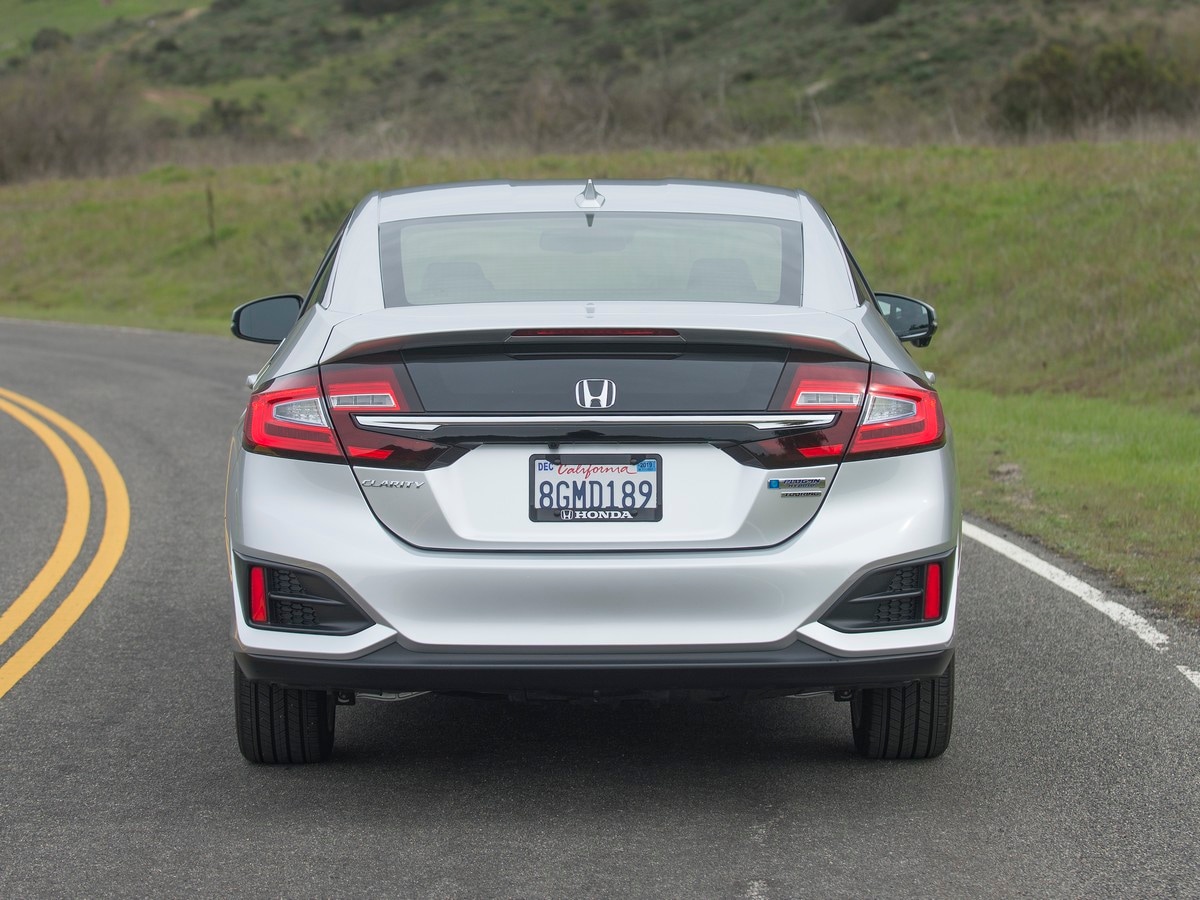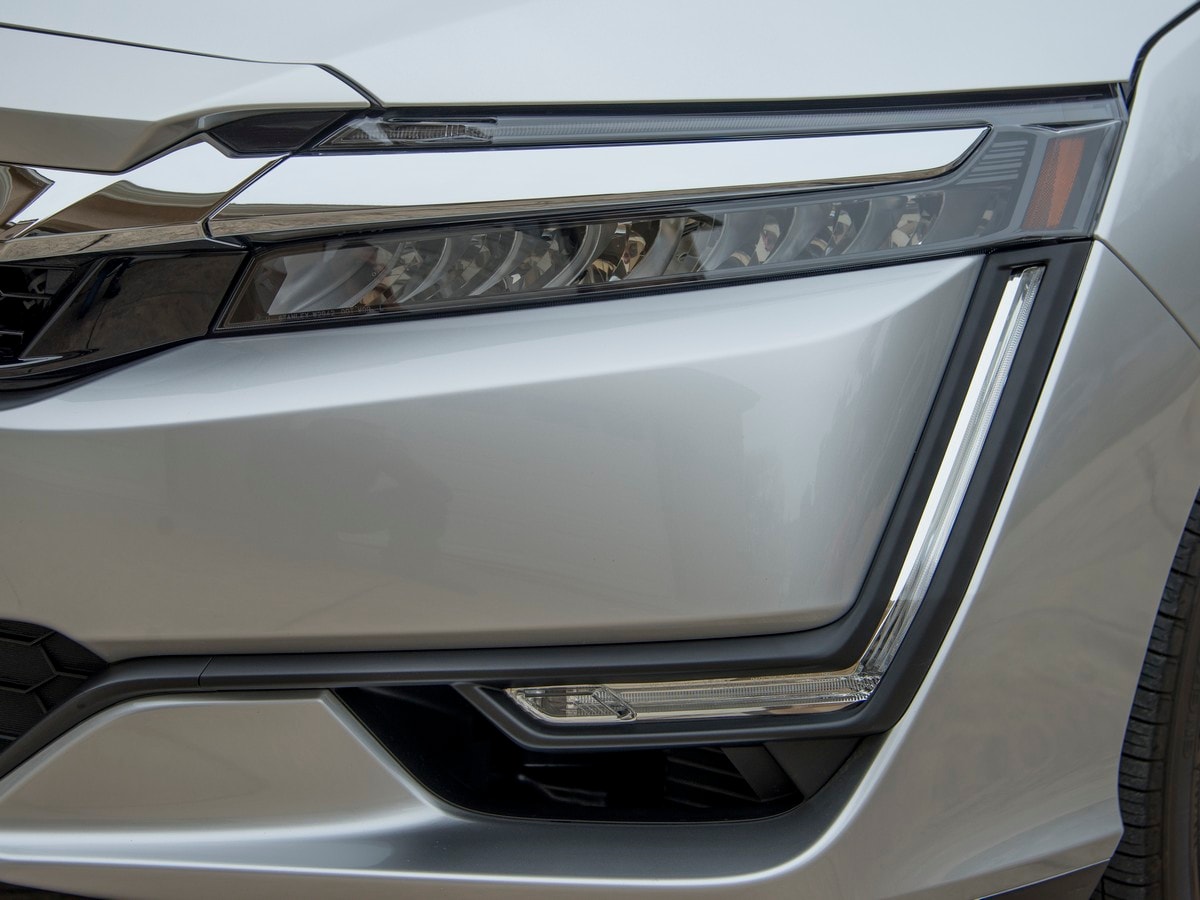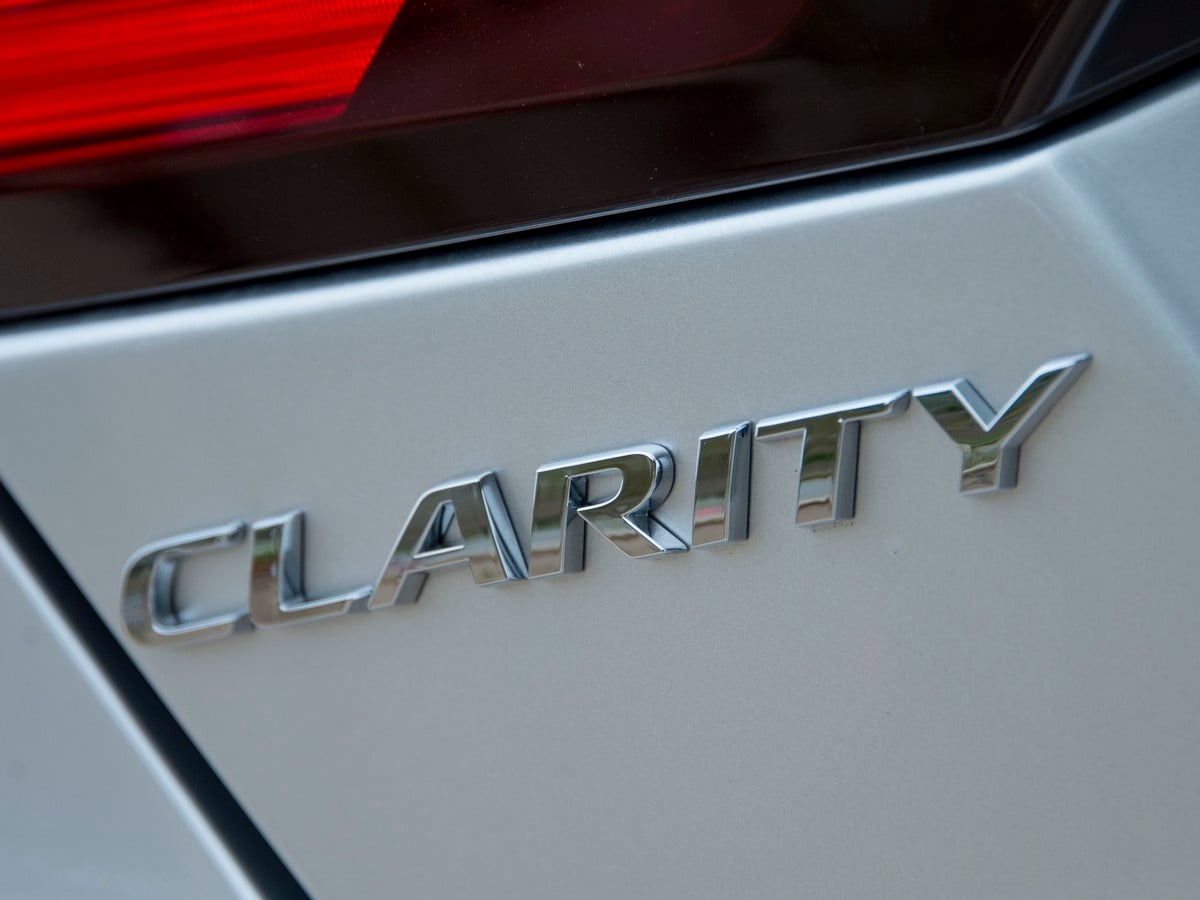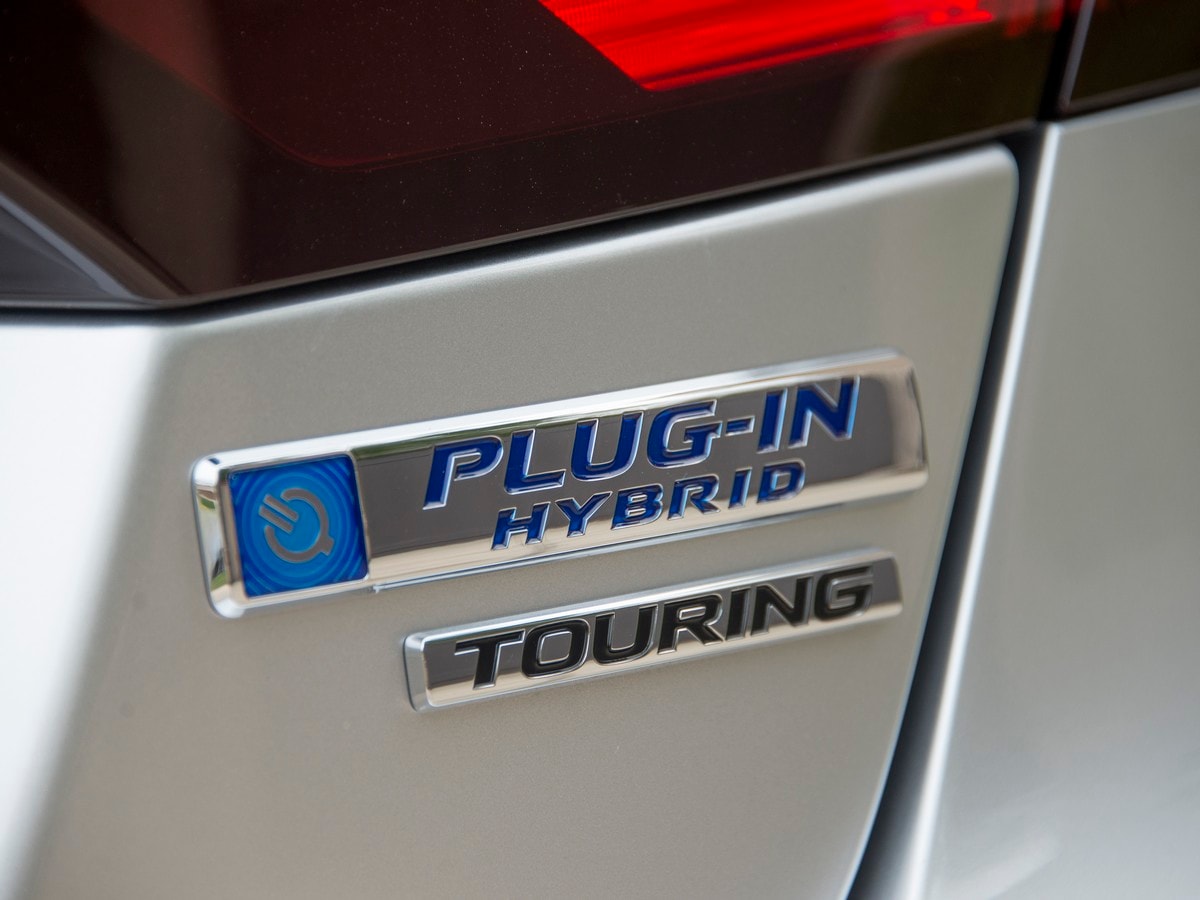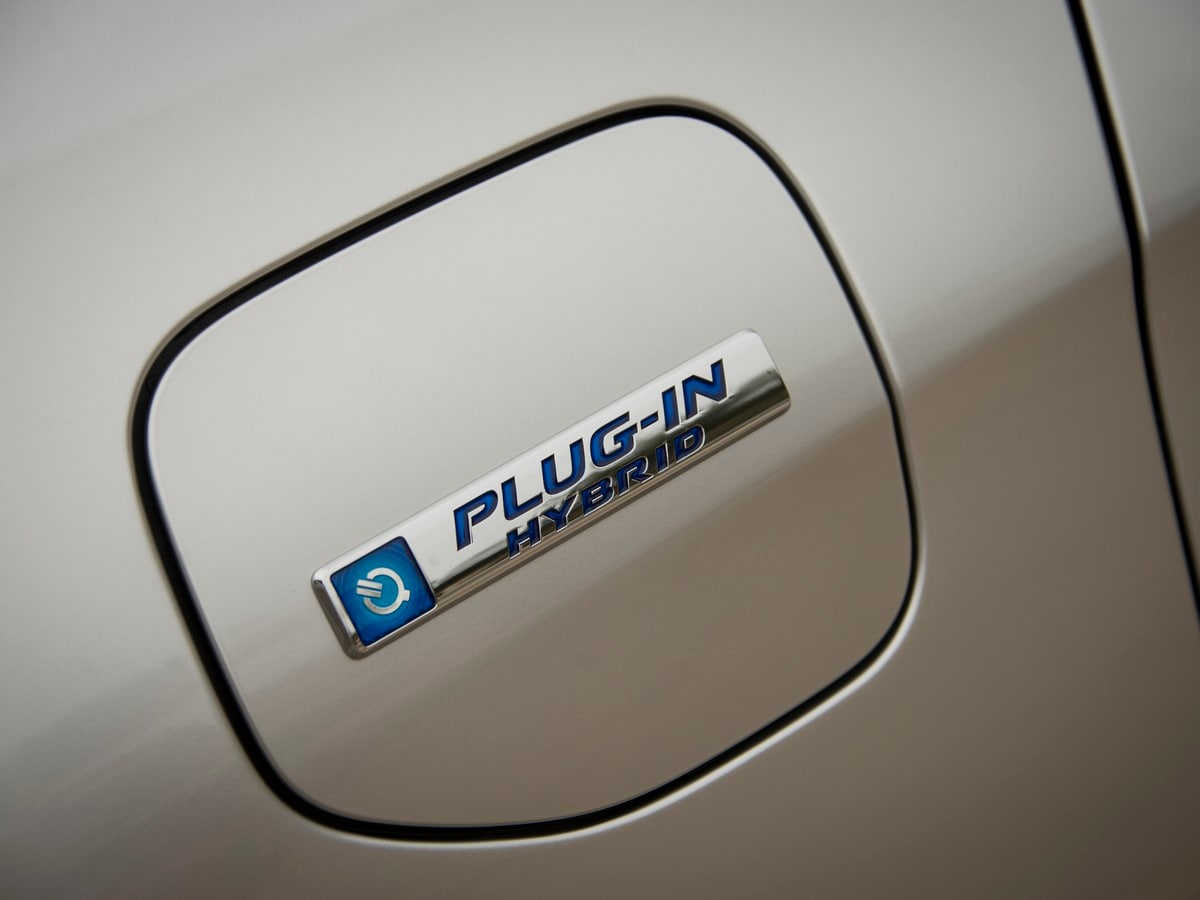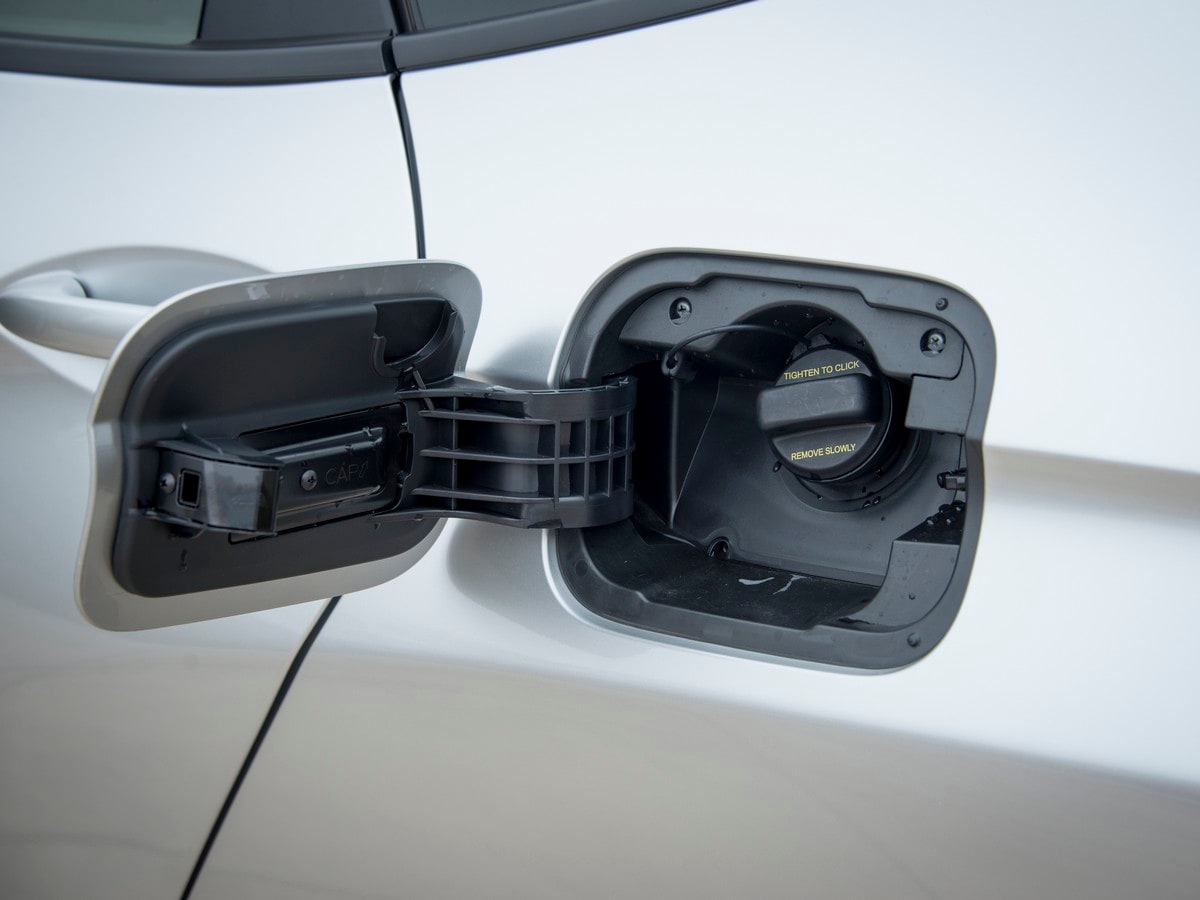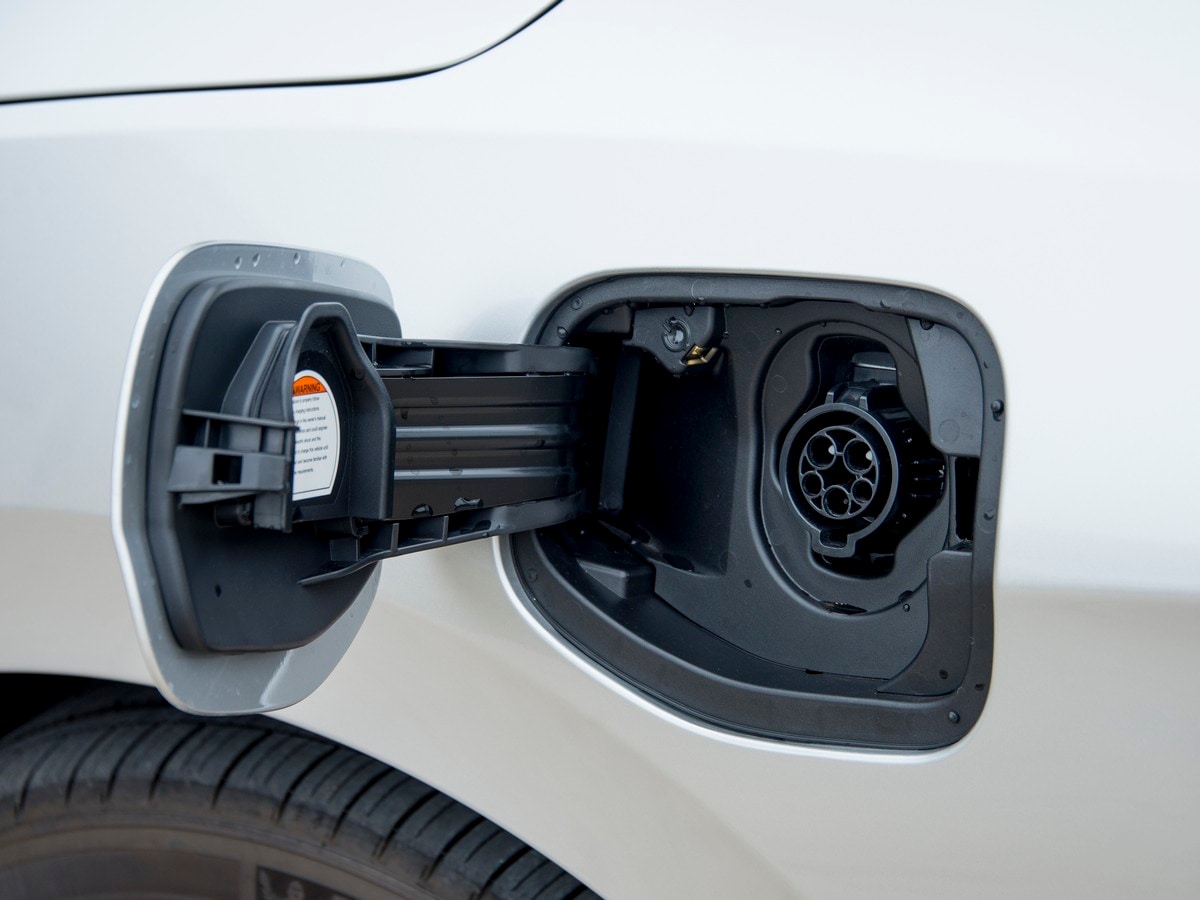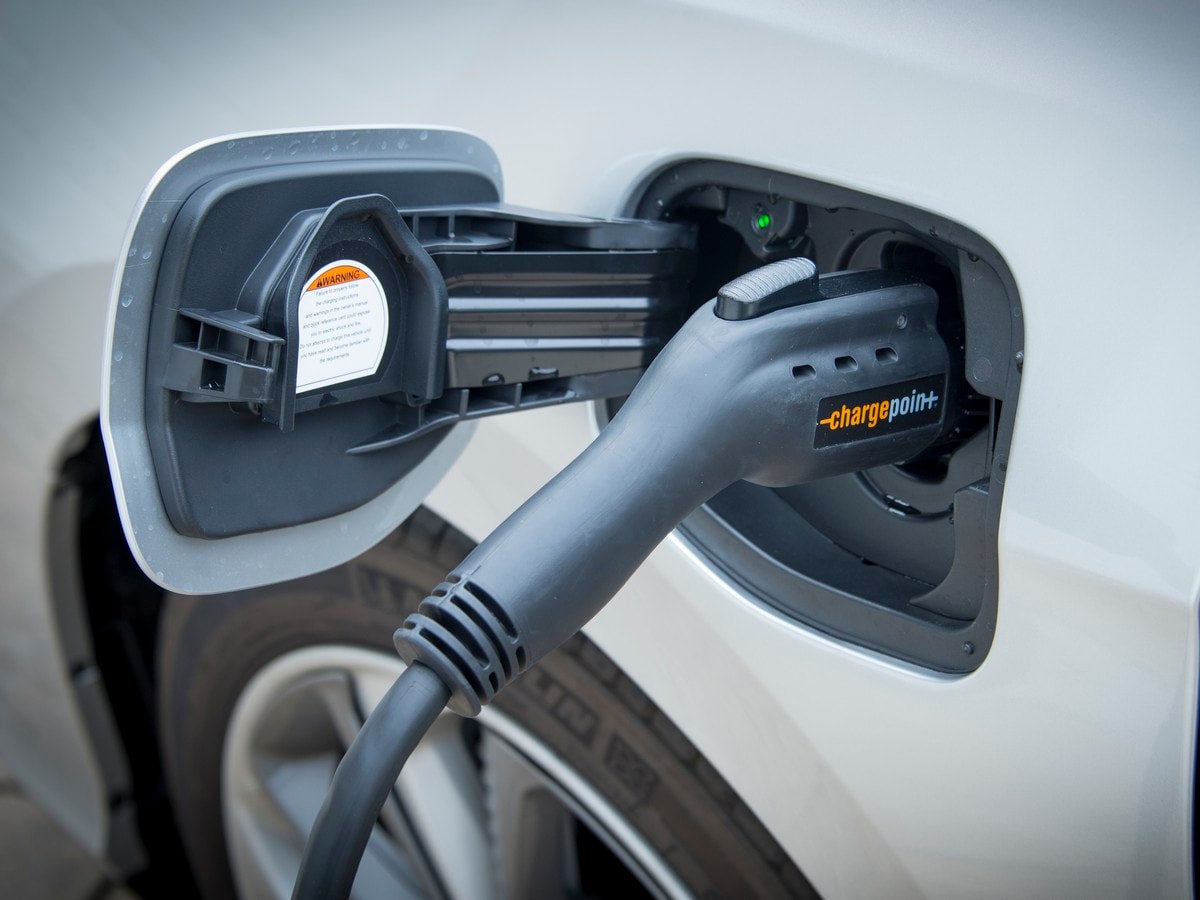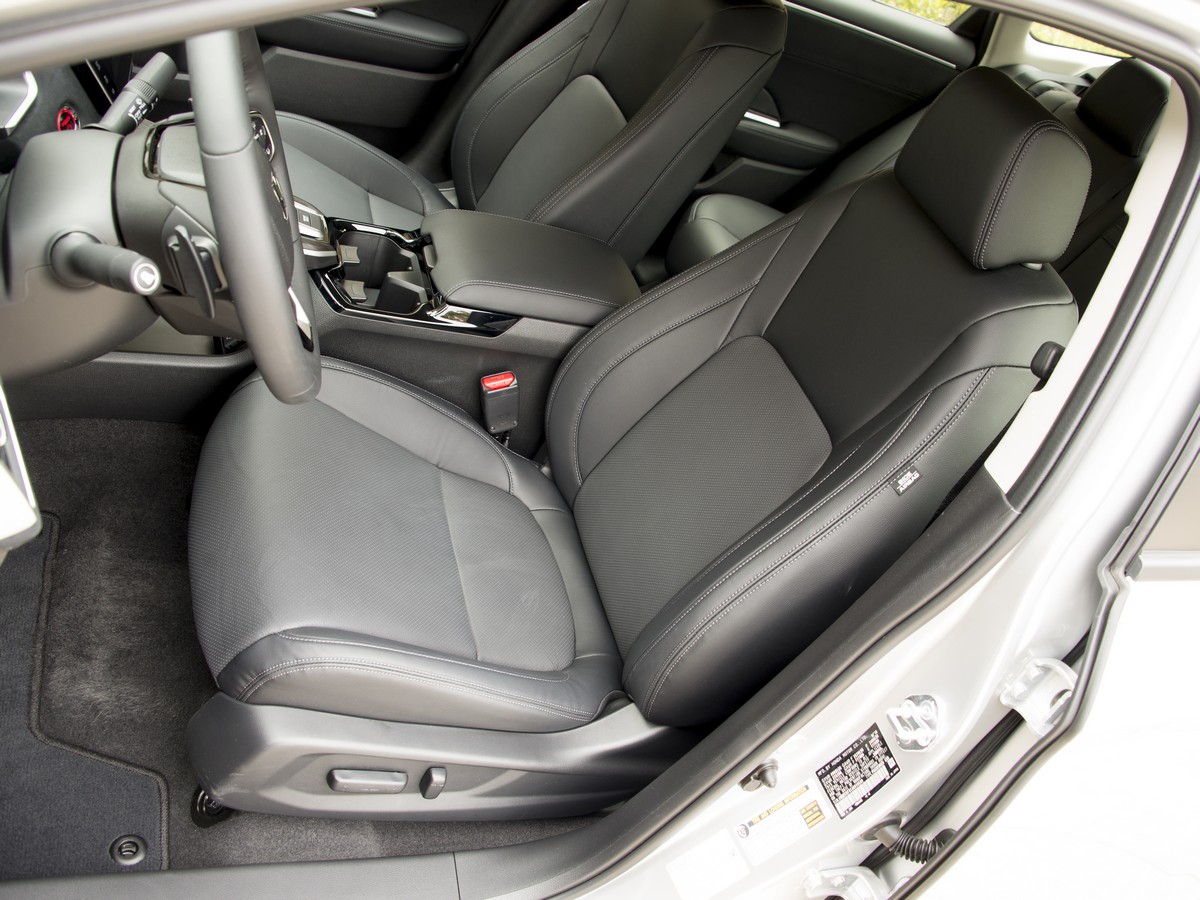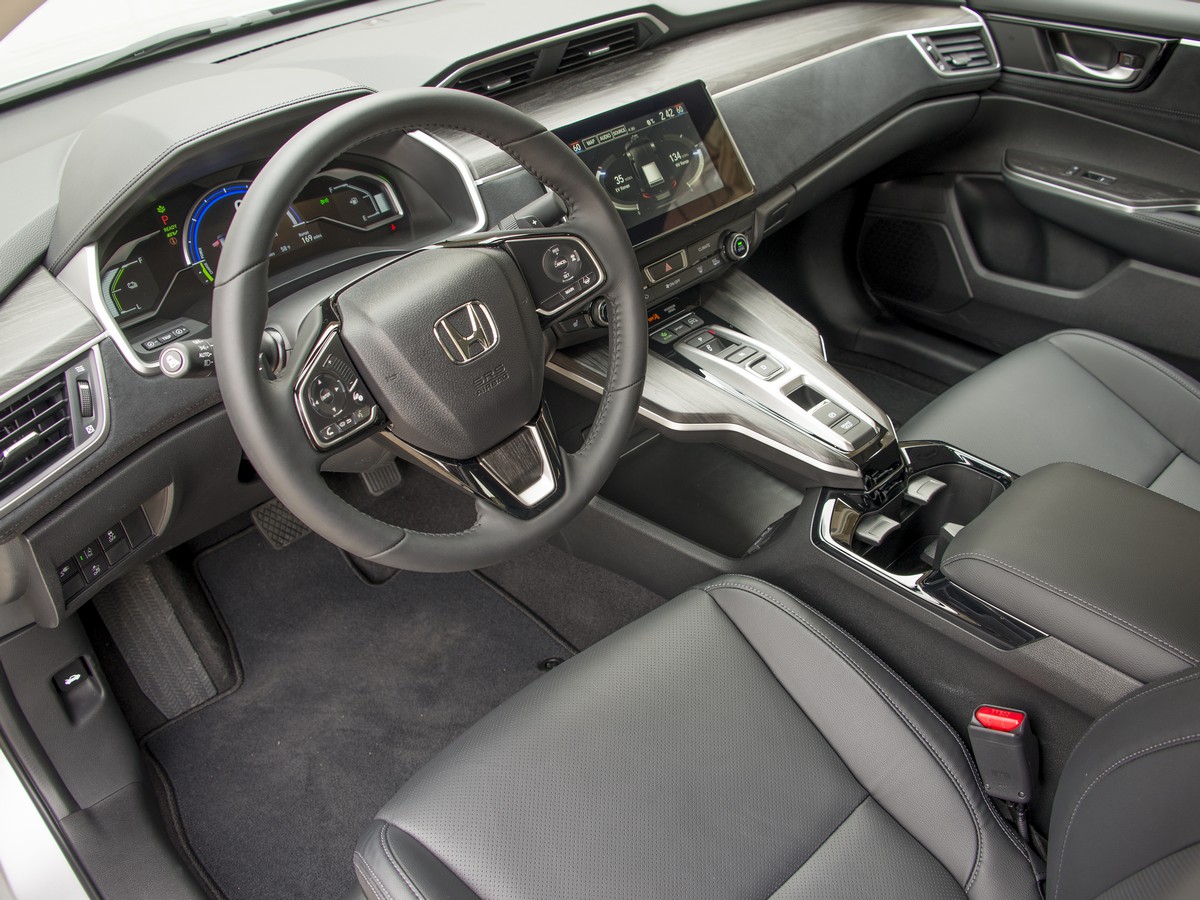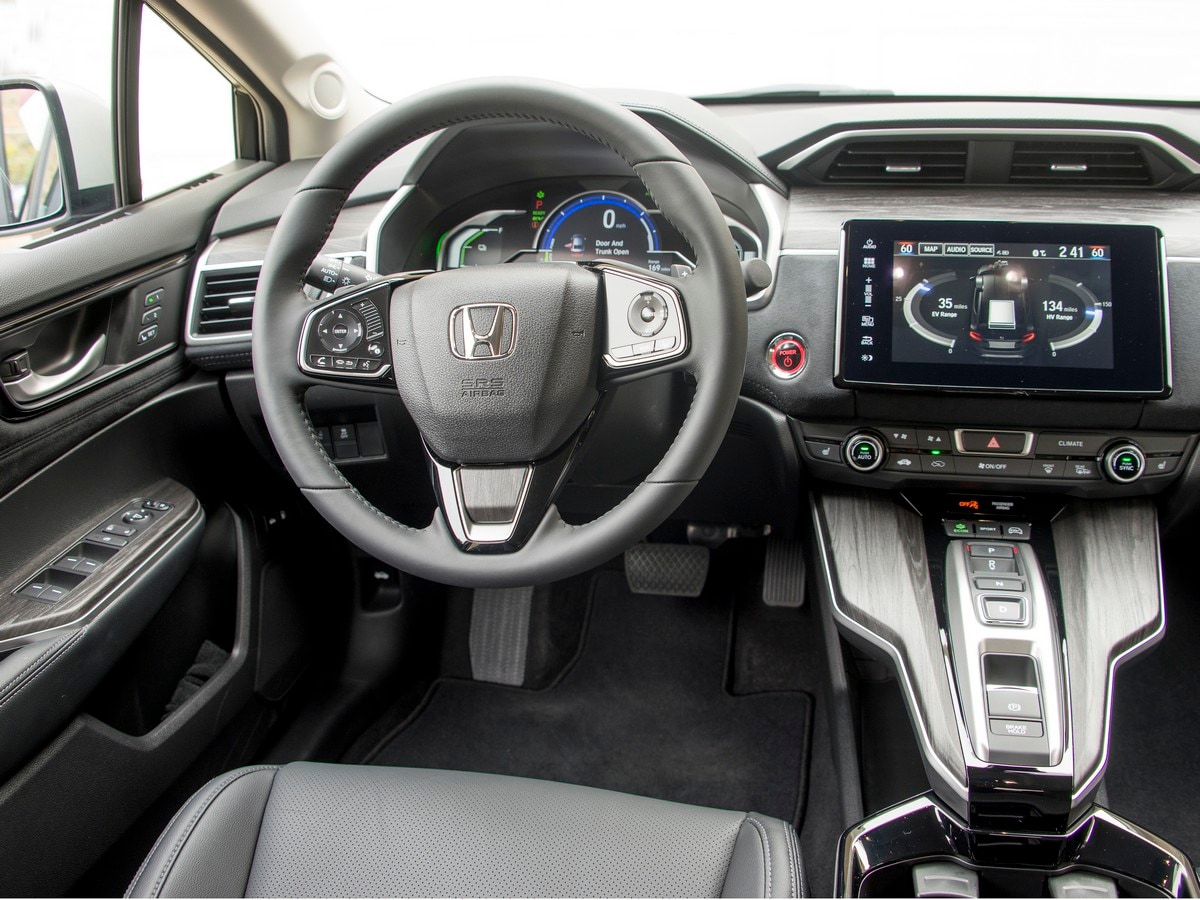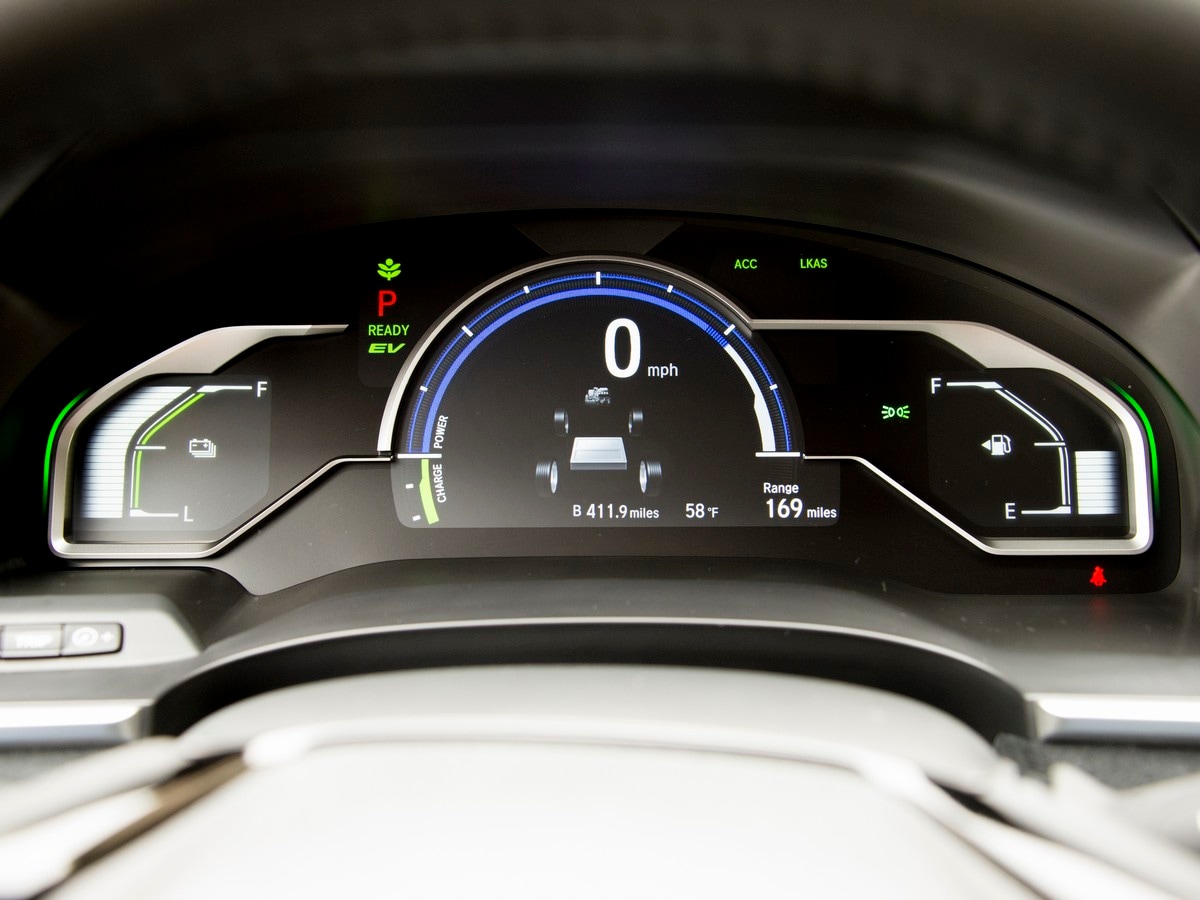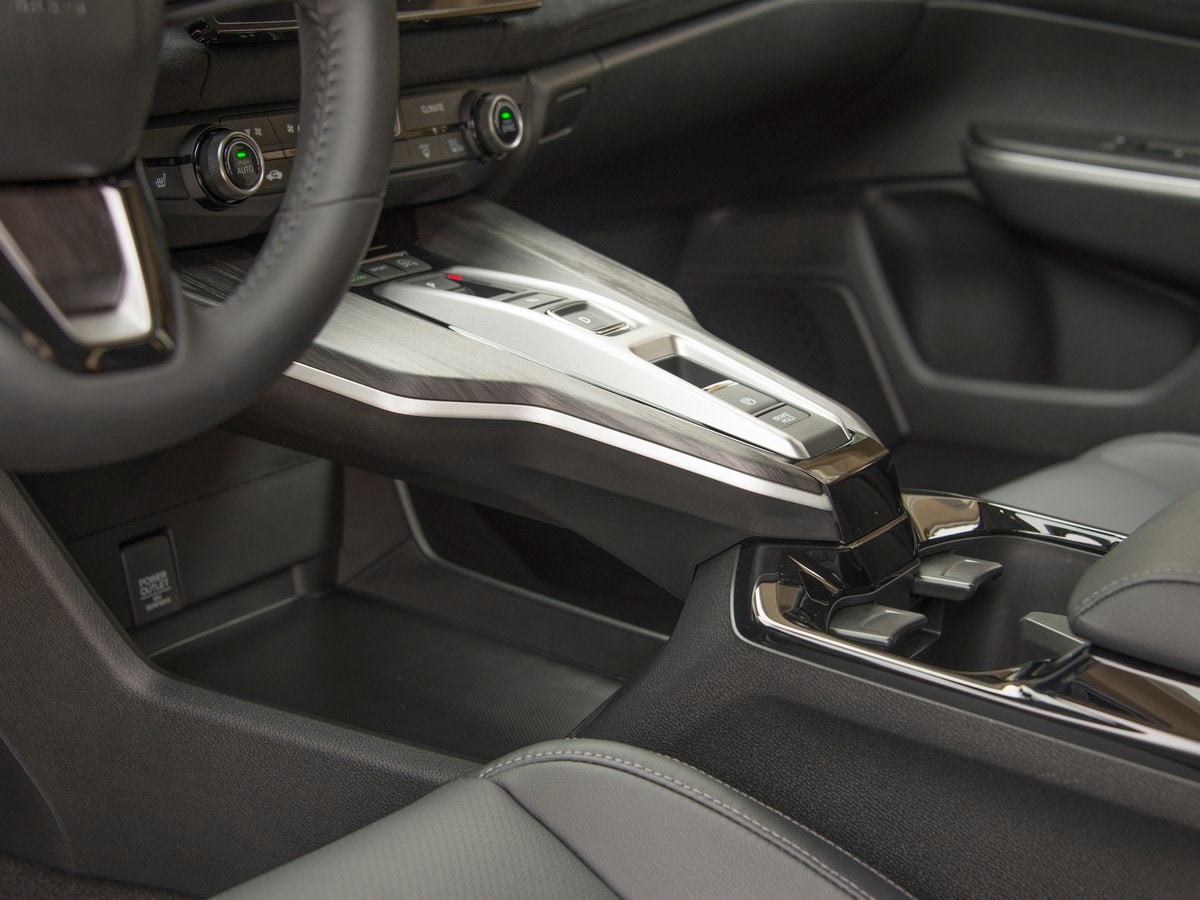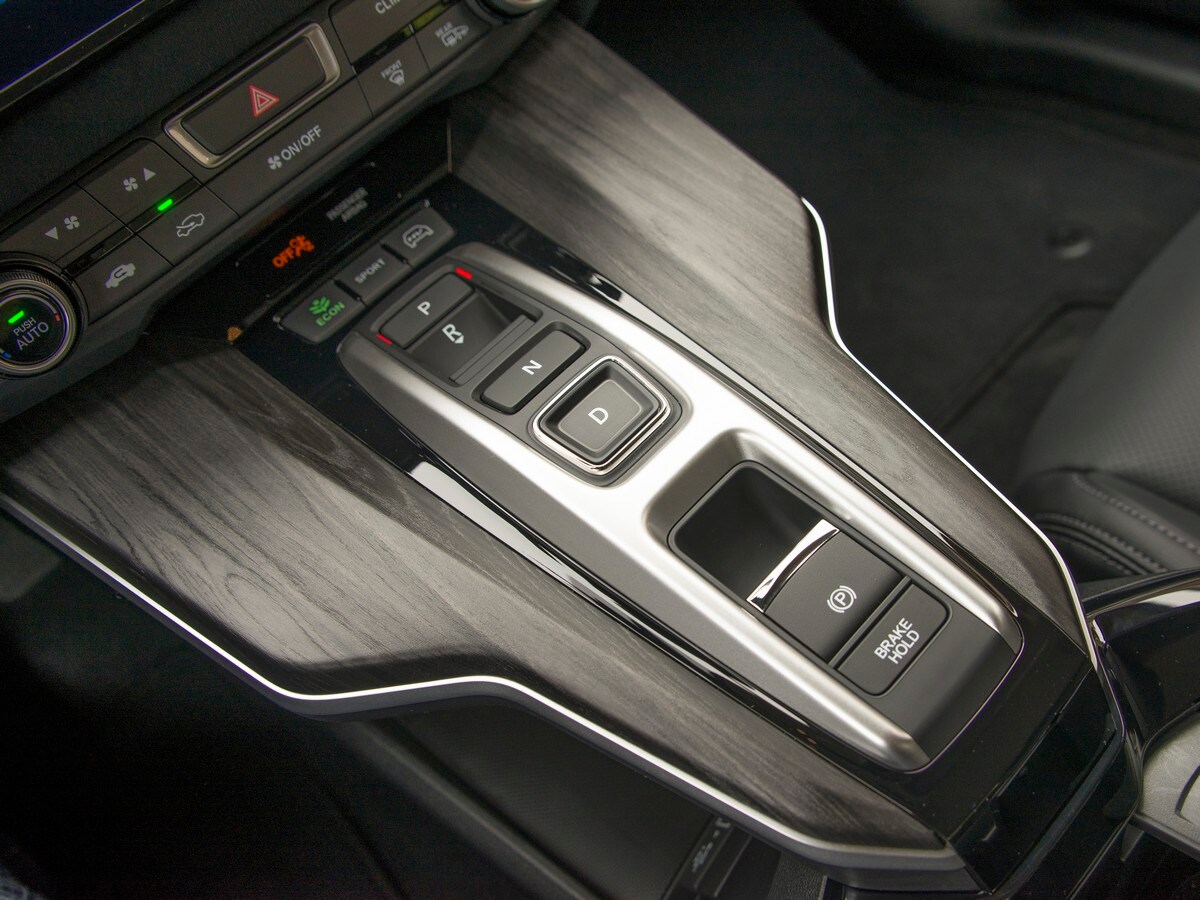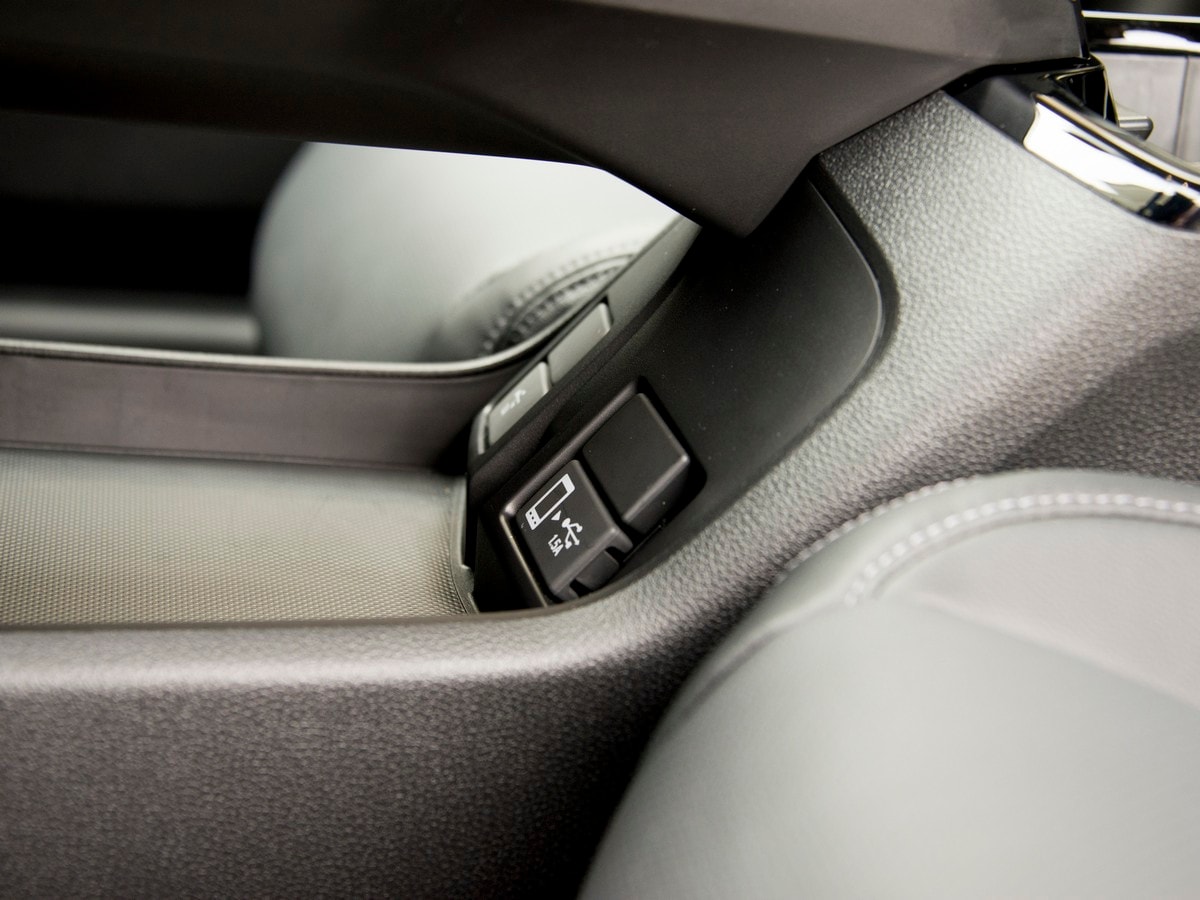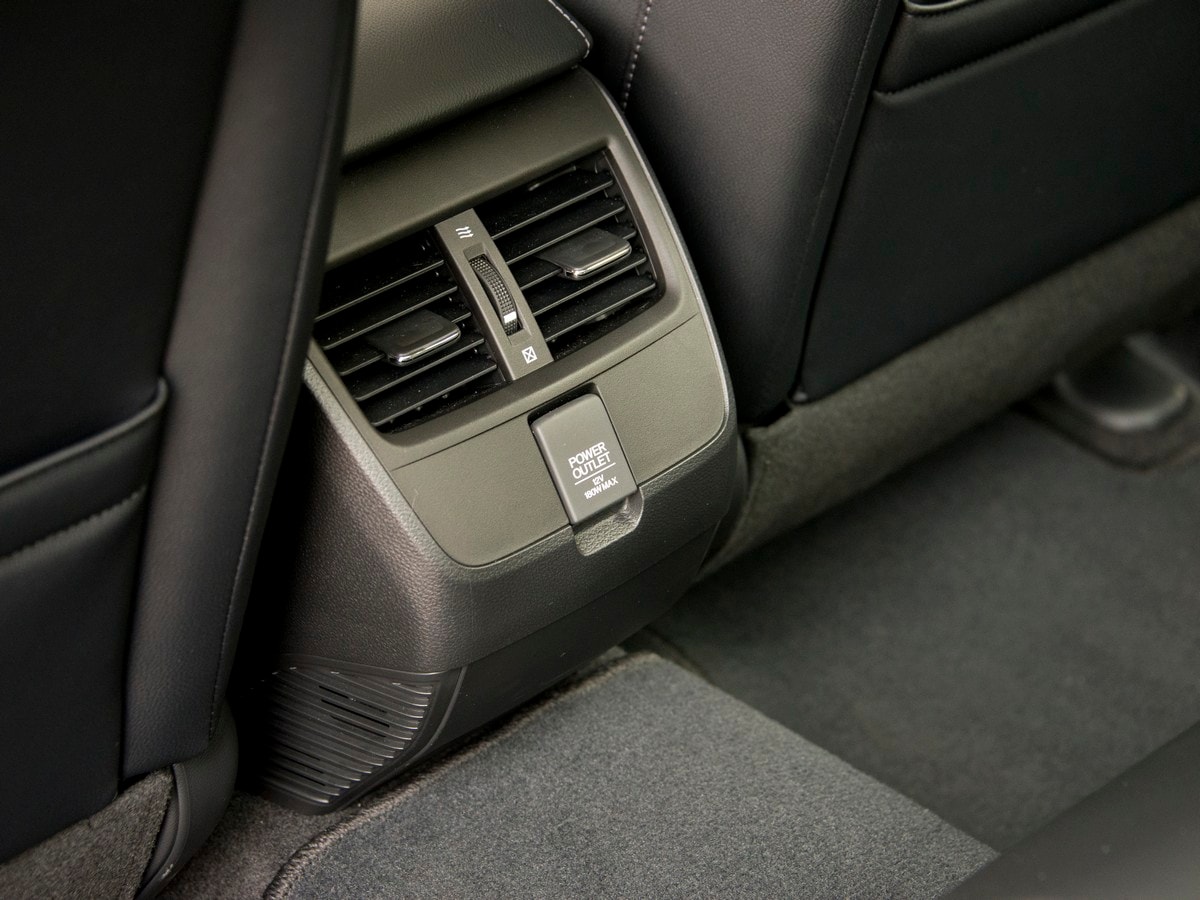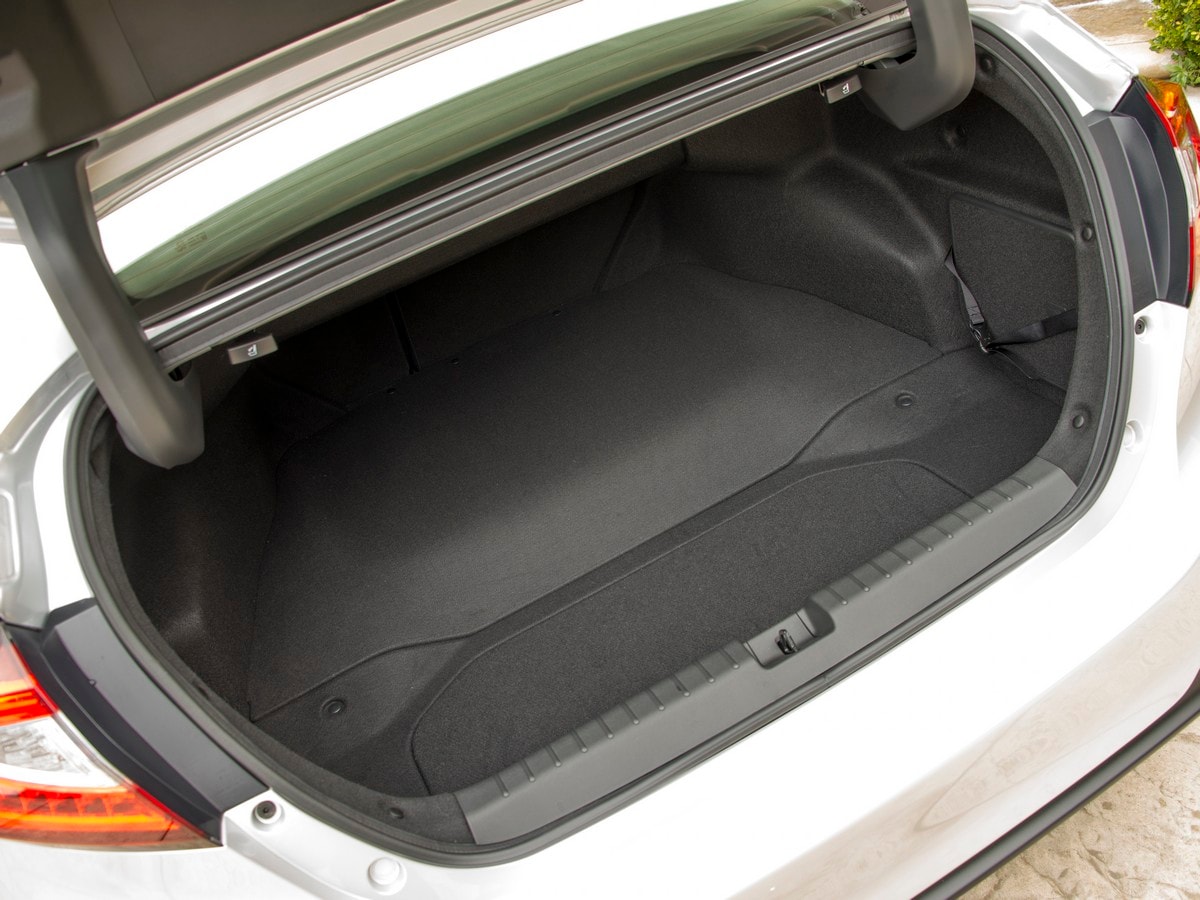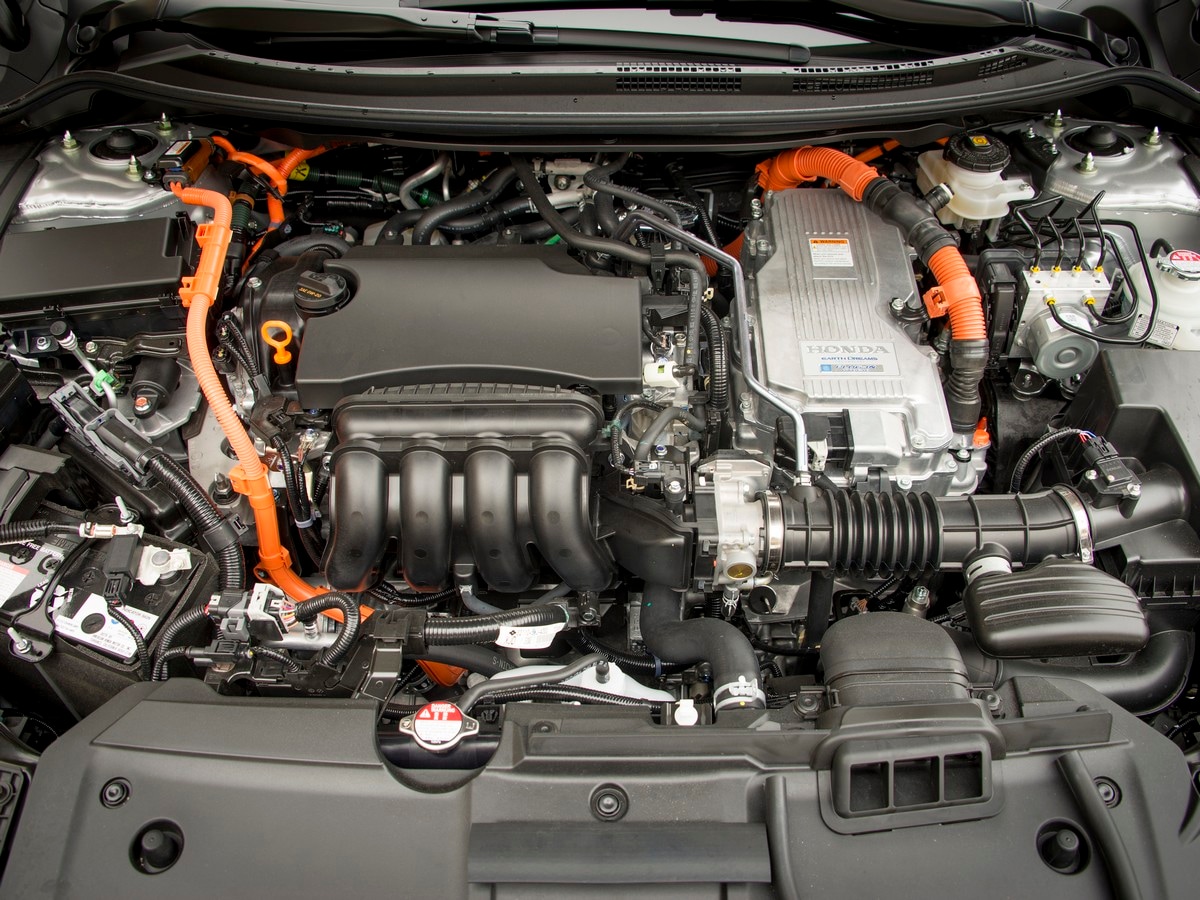We’re spending 12 months with this Honda Clarity, reviewing the full ownership experience with ongoing updates. Also, find out why we named the Honda Clarity Plug-in the Best Buy in its class for 2019.
Final Wrap-up with a 1,314-mile Range Tank!
by Michael Harley on January 18, 2020
Final Odometer: 26,388 miles
Latest MPG: 70.33 MPG
Overall MPG: 89.45 MPG
Maintenance/Service Costs: $323.43
Time out of Service: 0 days
The Clarity’s keys were handed back to Honda this week, but not before it impressed our team by delivering an amazing 1,314 miles on a single tank of fuel with a hand-calculated fuel economy of 272.28 mpg (I pumped just 4.83 gallons into the tank after nearly four weeks of driving). Credit the holidays, which reduced the number of times I did my 95-mile (one-way) commute into the office — an exercise that typically required 1.5-gallons of fuel each direction.
In the end, the KBB team put just over 26,000 miles on the Honda Clarity during the 12-month loan period. The sedan was 100 percent mechanically sound, with the only item ever “breaking” being the front windshield (thanks to a rock). The PHEV visited the dealer three times for oil changes (about every 7,500 miles), which is on the “very frequent” side of things when you consider (based on our calculation) that the engine was likely only running about 50 percent of the time. (It appears that the low-volume Clarity runs the same maintenance algorithms as its pure-combustion Honda siblings, which means its oil is being changed twice as frequently as it should be.) That led someone on our team to comment, “If you want a really clean junkyard engine in 20 years, find an old Clarity!”
Mechanically speaking, a quick inspection of the brake pads shows very little wear (thank continuous energy regeneration) and the tires appear to have enough tread remaining to last another 30,000 miles — most owners should be able to get 50,000 miles out of the original set. Operating costs, as expected, are impressively low.
Cosmetically speaking, the exterior paint held up exceptionally well and we didn’t have any issues with trim or accessories (even the lower front air splitter, which infrequently bumped into things, looked great). The interior held up well, too, without any wear areas on the leather or upholstery. The floor mats, which are easily replaceable, did show some wear under the accelerator pedal from the heels of our shoes.
Our Clarity PHEV dislike list is short. At the top was the infotainment system, which was slow to respond and frustrating to use (overlooking the fact that it lacks a volume knob). The lack of lumbar support in the seats was a constant pain-in-the-back for several on the team, while others didn’t like the push-button gearbox controls. And, we were continuously disappointed by the front windshield wipers (the “Smart Wiper” system delivers barely a trickle of liquid to the glass and its fluid reservoir is ridiculously small).
Thankfully, we liked an awful lot about the Clarity PHEV. It’s 40-plus mile EV-only range was impressive and we enjoyed having seven gallons of gasoline in reserve for the times we weren’t able to recharge (it delivers about 45 mpg in combustion-only mode). The cabin is spacious for four adults and the passenger cabin is exceptionally quiet while driving down the road (assuming we didn’t have its excellent radio blasting). We packed plenty of things in the trunk and used the pass-through (a rare feature on a PHEV) frequently. And, we should mention reliability — it never failed to deliver us anywhere.
After a year with the 2019 Honda Clarity, we have confirmed our initial impressions — it is a well-deserved KBB Best Buy for 2020. Put it on our highly recommended list.
Clarity Rear Seats are a Family Favorite
by Michael Harley on December 18, 2019
Current Odometer: 23,998 miles
Latest MPG: 49.60 MPG
Lifetime MPG: 87.44 MPG
Maintenance/Service Costs: $323.43
Time out of Service: 0 days
Everyone, regardless of height, size, shape, or mass, is a fan of the rear seats in the Honda Clarity because they offer generous legroom and are comfortable for three adults in a pinch. Honda puts map pockets on the rear of both the driver and passenger front seats, and there are small “phone pockets” higher on the seatbacks for personal electronics. While there is no USB port to be found, I have been using a 12-volt cigarette adapter (with three USB outlets) to give those in the rear seats power to charge. The rear of the center console also has a vent (with controllable airflow) to keep those in the second row temperate. And, kudos to Honda for putting a “one-piece” floormat in the back. This design is much easier to clean and it keeps the bump in the floor (for the exhaust pipe) spotless.
Breaking Our Fuel Economy Record
by Michael Harley on December 8, 2019
Current Odometer: 23,228 miles
Latest MPG: 282.12 MPG
Lifetime MPG: 88.82 MPG
Maintenance/Service Costs: $323.43
Time out of Service: 0 days
Without much effort, the 2019 Honda Clarity delivered its best fuel economy to date — an impressive 282.12 miles-per-gallon! As I have discovered, increasing fuel efficiency simply means driving fewer miles on each trip. If I am able to limit my excursions to 15-20 miles each time, and charge while stopped, the Clarity will run on pure-EV mode the whole time (of course, my 98-mile commute shatters this goal all the time). Note that our per-mile operating costs (for fuel) were less than $.01/mile. That’s mind-blowing.
Third Service is Routine and Uneventful
by Michael Harley on November 18, 2019
Current Odometer: 20,798 miles
Latest MPG: 64.87 MPG
Lifetime MPG: 87.82 MPG
Maintenance/Service Costs: $323.43
Time out of Service: 0 days
The “service required” light illuminated again at about 20,000 miles, which required our third visit to the dealer. We took it over to Norm Reeves Honda, in Irvine, as it was convenient to the office (I was going to wait for the service in the customer lounge). Based on the mileage, I figured the Clarity was due for another routine oil change, which was a correct assumption, but there was a bit more involved. The “suggested” services included tire rotation, new engine air filter, and a new cabin air filter. I asked the dealer to change the oil and filter, and rotate the tires, but toss both the engine air and cabin air filters on the back seat as I would replace them myself. No tools were required, and the 10 minutes of effort saved about $100 or so! (Search YouTube videos for installation instructions for both.). Our service bill came to $158.33. Aside from routine maintenance, the Clarity received a clean bill of health.
Premium Parking for EV Owners
by Michael Harley on November 11, 2019
Current Odometer: 21,382 miles
Latest MPG: 110.15 MPG
Lifetime MPG: 88.38 MPG
Maintenance/Service Costs: $165.10
Time out of Service: 0 days
One of the many benefits of driving a PHEV (plug-in hybrid vehicle) is premium parking. About once a week I’ve been able to find spaces that are equipped with charging units reserved for EVs, and these are typically in the front of the lot. I’ve spotted these premium marked parking spots at shopping malls, restaurants, and even places like Home Depot. While some offer free charging, others are equipped with commercial chargers. In the photo, which was taken outside Saks Fifth Avenue in Topanga, California, I’m using a ChargePoint charger. The first several hours of parking are free (I was charged a nominal fee for the electricity), but after a set period of time there is a loitering surcharge – standard practice these days. No worries about staying too long, as the charging unit sends text messages as reminders. What a nice EV benefit!
Honda Smart Wiper System Fails
by Michael Harley on October 25, 2019
Current Odometer: 20,798 miles
Latest MPG: 105.12 MPG
Lifetime MPG: 87.89 MPG
Maintenance/Service Costs: $165.10
Time out of Service: 0 days
I’m one of those guys who likes a clean windshield, so I was excited to learn that the Clarity has Honda’s new “Smart Wiper System” as standard equipment. The innovative system removes the traditional cluster of wiper jets, which are usually mounted on the base of the windshield or the underside of the hood, and replaces them with four tiny arm-mounted nozzles on each side of the blade. By design, the system lays down a thin layer of fluid immediately in front of the blade, which is just where it is needed (no water is deposited on the retreating side). Theoretically, the precision application reduces the amount of washer fluid needed for cleaning.
In practice, the “Smart Wipers” deposit far too little fluid on the dirty window while in action, which forces the driver to hold the washer lever on even longer… and they still don’t work. Traditional wipers spray the glass about a second before the wipers squeegee it clean, and that gives the washer solution a moment to soften the bugs, droppings, and dirt. Honda’s Smart Wipers squeegee the glass milliseconds after the liquid hits, meaning there is no time to loosen the grime. Furthermore, Honda’s engineers chose to reduce the size of the fluid reservoir assuming it was going to use less water, so the small tank (just 1.43 quarts) runs dry very quickly. Only making matters worse, the U.S. market doesn’t get a “Low Washer Fluid” light so we can’t tell when it is running low.
Getting Smart with Charging Times and Costs
by Michael Harley on October 6, 2019
Current Odometer: 19,231 miles
Latest MPG: 87.69 MPG
Lifetime MPG: 88.97 MPG
Maintenance/Service Costs: $165.10
Time out of Service: 0 days
Gasoline pricings creep up and down a few cents each week, which makes fueling the combustion engine a rather consistent expenditure – most of the time I put about five gallons of gas into the tank, and that runs about $23.00 (gasoline in California is expensive). Electricity is a whole different ballgame as energy providers (in our case Southern California Edison) throttle prices up and down based on demand. During a hot summer day, prices are very steep. Eight hours later, when the sun has set, prices plummet. The above image is a composite of two different electrical charges. Both added about 40 miles of range to the battery, but the charge during the day was $11.71, while the charge at night was just $1.81 (ignore the time on the charger, as it is mostly irrelevant). Paying $11.71 to travel 40 miles is ridiculously expensive – the equivalent of about 16 mpg. However, paying $1.81 to travel 41 miles is really good – the equivalent of about 116 mpg. Interested to see how low we can keep the at-home charging costs during the month of October, I am going to only charge after 9:00 PM, when rates are lowest (keep in mind that charging only takes about 2.5 hours).
The Clarity’s “ECON” Button Mystifies
by Michael Harley on September 16, 2019
Current Odometer: 18,443 miles
Latest MPG: 91.74 MPG
Lifetime MPG: 89.43 MPG
Maintenance/Service Costs: $165.10
Time out of Service: 0 days
The “ECON” button in the Clarity PHEV is officially designed to limit the amount of combustion engine use, which is theoretically able to increase fuel efficiency. However, I’ve been running tank after tank with the ECON button activated, and inactivated, and I can’t seem to notice an iota of difference between the two settings. The most recent tank, with the ECON button deactivated, returned 91.74 mpg – not shabby at all. Two tanks earlier, with the button activated, the Clarity delivered 82.53 mpg – slightly worse. Maybe it’s a mental thing, but I am also convinced that having the ECON button activated reduces the activity of the air conditioning compressor (making the cabin warmer) and it slows throttle response (making the accelerator pedal feel a bit more sluggish). I don’t like either of those perceived side effects (whether I am imagining them or not), so I am going to defeat the ECON button for the next month or so and see how the fuel efficiency fares.
Just under 200 mpg with the Honda Clarity
by Michael Harley on August 29, 2019
Current Odometer: 17,050 miles
Latest MPG: 196.94 MPG
Lifetime MPG: 89.08 MPG
Maintenance/Service Costs: $165.10
Time out of Service: 0 days
Proving the theory in our last update, we squeezed 644 miles out of the Clarity’s most recent tank of fuel. After pumping in just 3.27 gallons of gasoline, the match calculates out to nearly 197 mpg – that’s a new record for us. Unlike most of our previous tanks of fuel, which were handicapped by the commute, we spent a long weekend driving the Honda and charging its battery each time we were near a Level 2 charger (we even found an open unit at the mall). We only dipped into the combustion engine a few times, thus explaining why we burned a few gallons of regular unleaded. We should note that we have been operating the Clarity in “Eco” mode nearly continuously – it doesn’t seem to cramp our driving style. Maybe we will run it in “Sport” mode next, just to see how much our efficiency is compromised?
Why are we not happy with the Honda Clarity’s 87 mpg average?
by Michael Harley on August 13, 2019
Current Odometer: 16,112 miles
Latest MPG: 146.25 MPG
Lifetime MPG: 87.14 MPG
Maintenance/Service Costs: $165.10
Time out of Service: 0 days
KBB’s long-term Honda Clarity PHEV has been averaging better than 87 mpg since its arrival at the beginning of this year. That’s impressive, without a doubt, but we’re not completely pleased because we can do better. In a nutshell, we average over 70 mph during our early morning, high-speed, 98-mile commute. Those velocities consume battery electrons at a rapid rate, and without any braking there is nearly zero energy regeneration – our stored energy goes from full to discharged in a few as 33 miles. The remaining commute is done with the combustion engine running, which delivers about 45 mpg. This means we burn about 1.5 gallons during our morning commute – that equates to about 65 mpg. Even though we drive in pure-EV mode during most of the day, consuming no gasoline, that 65 mpg commute brings our average down to just over 87 mpg. We expect owners without a long highway commute will see triple-digit averages.
15,000-mile Honda Clarity Service is Effortless
by Michael Harley on July 31, 2019
Current Odometer: 14,800 miles
Latest MPG: 76.96 MPG
Lifetime MPG: 85.79 MPG
Maintenance/Service Costs: $165.10
Time out of Service: 0 days
We’ve been piling the miles on the Clarity over the past few months – a testament to how much we like the quiet, comfortable, and extremely fuel-efficient Honda. As expected, the “Service” light illuminated for the 15,000-mile service as we neared the milestone. We used HondaLink, which is the Clarity’s smartphone app, to effortlessly schedule service while at 38,000 feet on a cross-country airplane flight! Honda of Thousand Oaks took great care of us, changing the oil and rotating the tires for a reasonable $68.64 out the door. Our only “issue,” which the dealer took care of, was with the passenger-side wiper that was tapping the A-pillar on every sweep (the blame is aimed at the Safelite repair guy, who reinstalled the wiper arm improperly when he replaced our windshield last month). Other than that, the Clarity has been flawless.
Honda Clarity windshield repair is expensive
by Michael Harley on July 10, 2019
Current Odometer: 13,462 miles
Latest MPG: 95.81 MPG
Lifetime MPG: 86.19 MPG
Maintenance/Service Costs: $96.46
Time out of Service: 0 days
Safelite AutoGlass finally found us a replacement windshield, which was installed last Wednesday – 30 days after a rock broke it. The wait for repair parts was eye-opening (and dizzying, as we drove with a cracked windshield), but the cost of the original-equipment Honda glass was nothing short of jaw-dropping. We signed a repair receipt for $1,893.10, which left us stupefied (thankfully, we have a warranty to cover the cost). Windshield glass is multi-layered and laminated, as it has been for years, but modern technology adds special bonded hardware and black-out areas for cameras and sensors that drive up the costs significantly (we’ve watched the same price escalations happen to headlights, which are equally as expensive these days). And, speaking of cameras, Safelite told us that they can’t calibrate the Clarity’s Lane Departure camera – we will have to ask the dealer to do it when we take the Honda in for service (and, we’ve been told, that will cost us at least an hour’s worth of labor).
Our Clarity suffers a broken windshield
by Michael Harley on June 25, 2019
Current Odometer: 12,759 miles
Latest MPG: 63.08 MPG
Lifetime MPG: 85.81 MPG
Maintenance/Service Costs: $96.46
Time out of Service: 0 days
Blame an errant rock, which came sailing over the highway center divider, for a broken windshield. This isn’t a rarity – we’ve experienced countless broken windshields on other vehicles – so we made a call to Safelite AutoGlass for an on-site repair. When they arrived for our installation appointment, five days later, the technician noticed that he had brought a windshield for a Honda Civic, not a Honda Clarity! He called the dispatcher, ordered a replacement (set to arrive in another five days), and left. A few days later, Safelite called to inform us that the Clarity windshields are on backorder – with no estimated in-stock date. That was three weeks ago. Our windshield is still broken, but we continue to drive the Clarity (don’t worry, it doesn’t seem to affect fuel economy) hopeful that we will have a replacement soon.
Mini Road Trip Review
by Matt DeLorenzo on June 17, 2019
Current Odometer: 12,040 miles
Latest MPG: 46.52 MPG
Lifetime MPG: 86.02 MPG
Maintenance/Service Costs: $96.46
Time out of Service: 0 days
I had to make a quick trip to the San Francisco Bay Area and took our long-term Honda Clarity, an outing that shows some big advantages and disadvantages of having a plug-in hybrid. On the positive side of the ledger, this is a vehicle that is not slowed by recharging if you have miles to cover—once you’ve run out of the pure electric range, which Honda touts at 47 miles, the Clarity functions as a conventional hybrid. You simply refuel the tank and continue on your merry way.
Another advantage is carpool lane access, which helped cut some of the time off the journey in congestion both in L.A. and San Francisco. Also, the real time navigation is pretty accurate with both time of arrival and helpful alternative routing scenarios. The last big plus is that the Clarity is a comfortable, roomy sedan with enough power to keep up with freeway traffic.
The big downside is that Honda has only a 7-gallon tank on the Clarity. The farthest I went (and ran the range estimator down to zero in the process) was 314 miles. It clearly needs to have a larger tank to give it the range we’ve come to expect from other plug-ins and highly efficient gas models. Also, since I was staying with our son at his apartment that didn’t have access to charging, I was unable to replenish the battery overnight. So, I had to stop for gas twice on the way back as compared to the one-time stop on the way up when I left KBB with a full battery charge.
The trip also wreaked havoc with Michael Harley’s goal to maximize fuel economy figures thanks to the plug-in nature of the Clarity. Before this trip he was logging per tank fuel economy ranging from 90 to as much as 147 mpg by continually topping off the charge. My little trip knocked the overall lifetime fuel economy down by 10 mpg to 86.02. I averaged between 43 and 48 mpg running on the hybrid alone and my fuel costs were nearly double at up to 9 cents per mile. Still, the Clarity has pretty nifty technology and it’s comforting to know that if you have to go anywhere, you won’t be dependent on an electrical umbilical cord to get there.
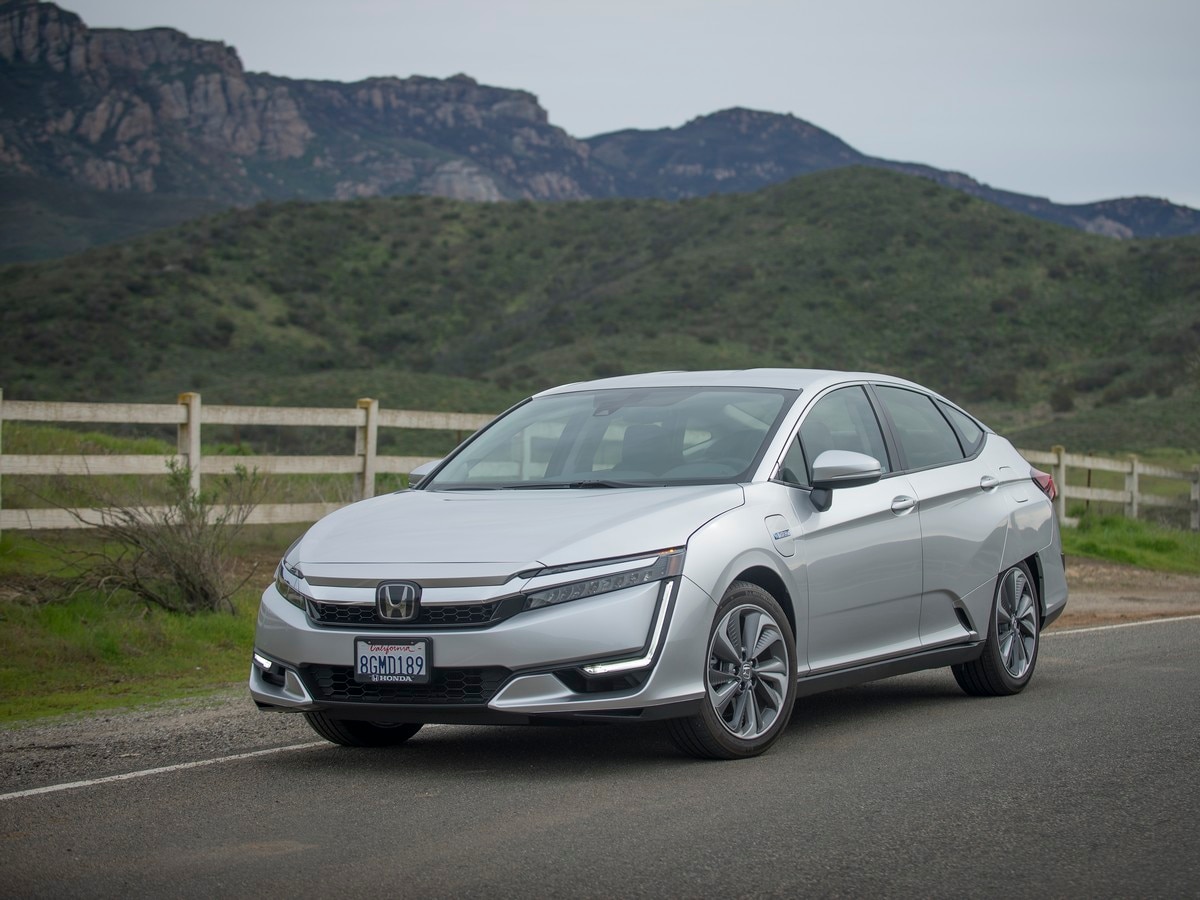
10,000-mile review of our Honda Clarity PHEV
by Michael Harley on May 29, 2019
Current Odometer: 10,326 miles
Latest MPG: 147.33 MPG
Lifetime MPG: 96.05 MPG
Maintenance/Service Costs: $96.46
Time out of Service: 0 days
Our long-term 2019 Honda Clarity PHEV breezed through the 10,000-mile mark rather effortlessly over the Memorial Day holiday, still sipping fuel at the rate of a trickle — just like it has since joining our fleet in early January. In terms of mechanical operation, it has been absolutely flawless. It drives as smoothly and quietly as it did on its delivery date, and the roomy cabin is completely free of squeaks and rattles. We continue to be impressed by its fuel efficiency (we have only pumped 99.77 gallons into its tank since arrival!) and quiet, serene ride. The passenger cabin is generous for four adults, and the trunk will easily swallow suitcases for each of those occupants, with room to spare. The negatives include a lack of lumbar support on the front seats, no “auto” setting for the windshield wipers, and the maddening infotainment system — we’ve begrudgingly learned to adapt to the lack of the volume knob. And, we would also like to see the range on battery and fuel prominently (and permanently) displayed directly aside each dash cluster gauge — as of now, you have to toggle to get that information on the cluster, which is cumbersome.
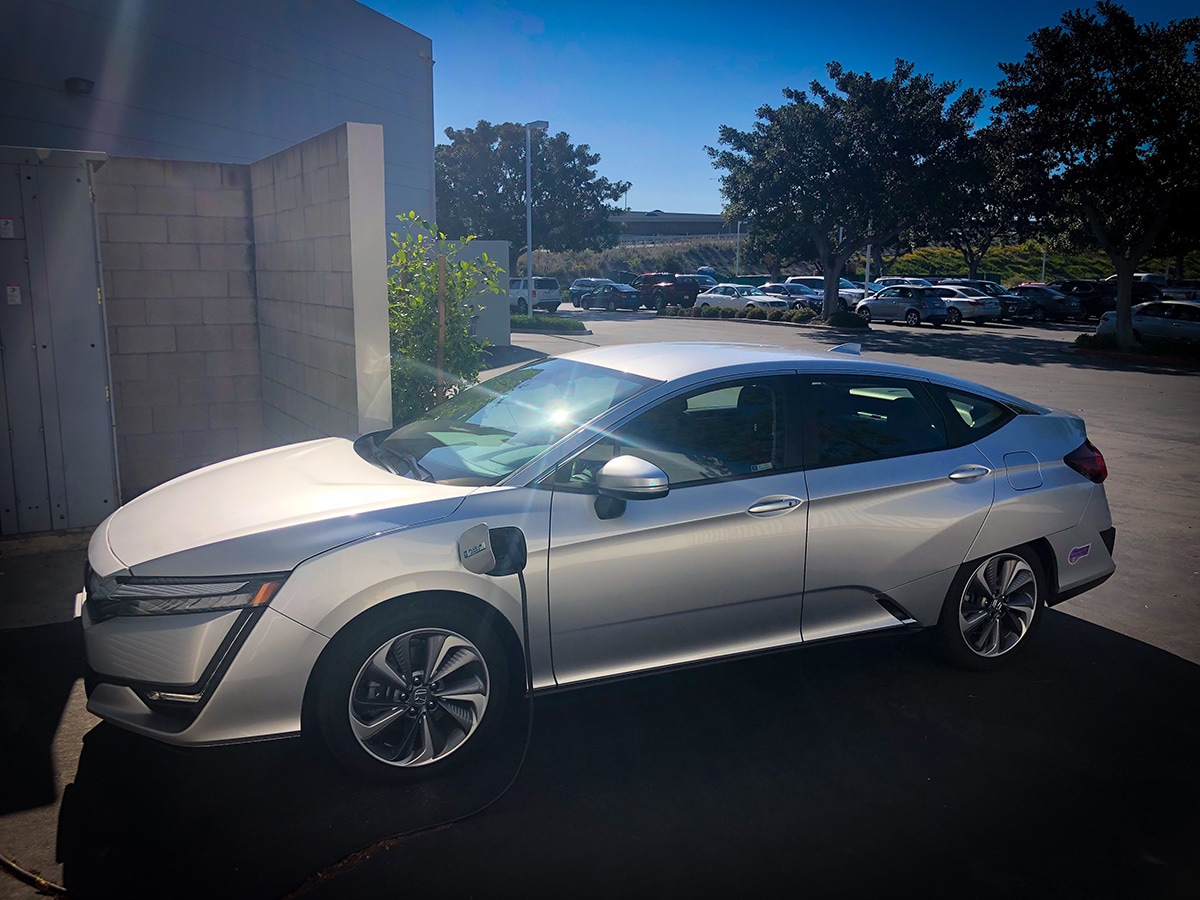
Honda Clarity demonstrates its impressive utility
by Michael Harley on May 22, 2019
Current Odometer: 9,827 miles
Latest MPG: 89.89 MPG
Lifetime MPG: 93.56 MPG
Maintenance/Service Costs: $96.46
Time out of Service: 0 days
One big complaint about hybrid vehicles is compromised utility. The large energy-storing battery packs eat up precious space. In an effort to retain the passenger footwell, most automakers choose to place the battery pack between the rear seat and trunk. It’s a valiant effort, but it typically means that the back seats don’t fold, and any pass-through opportunity is lost. And, in a worst-case scenario, trunk space is also compromised.
That’s not the case with the Clarity, which was a clean-sheet design. The engineers knew that they would be releasing PHEV and fuel cell models that would require space for batteries and hydrogen storage tanks. Constructed with these requirements in mind, the Clarity offers similar utility to most traditional sedans, and the Honda can carry quite a bit of cargo with its second row of seats folded.
While rebuilding my side fence, the lumber yard called and said my order was in. I was in the Clarity, so I swung by thinking I would make the payment and bring a larger vehicle back the next day to take home the load. However, after looking at the lumber and visually gauging the vehicle’s capacity, I suggested that the workers load it into the Clarity – more than 100 linear feet of 10”x1” wood planks! Much to everyone’s astonishment, it fit!

First Service at Honda of Thousand Oaks is Impressive
by Michael Harley on April 30, 2019
Current Odometer: 8,373 miles
Latest MPG: 131.79 MPG
Lifetime MPG: 95.82 MPG
Maintenance/Service Costs: $96.46
Time out of Service: 0 days
Miles on the Clarity PHEV are accumulating at a rate nearing 80 miles-per-day, which means its electrons have been working overtime. Two weeks ago, its service light illuminated as the 4-door demanded its first oil change and inspection (“demand” is an accurate word, as the annoying “Service Light” glared at us each time we hit the ignition button). Rather than take the Clarity to a dealership near our Irvine headquarters, we brought it to Honda of Thousand Oaks, which is about 85 miles northwest of Kelley Blue Book – the experience was phenomenal.
We arrived at the dealer an hour early for our 10:00 AM appointment, but another service advisor gladly helped us out – and arranged for the dealership’s shuttle to drive us 11 miles home! All systems are perfect with the Clarity, so all we needed was an oil change (Honda Full Synthetic 0W-20) with a new filter, tire rotation, and inspection. We picked-up the freshly-washed Clarity that afternoon and paid the reasonable $96.48 bill. There was no waiting on either end of the transaction, no attempt to sell us anything questionable (e.g., blinker fluid), and nothing but smiles from everyone we came in contact with – we wish all dealership services were this effortless.
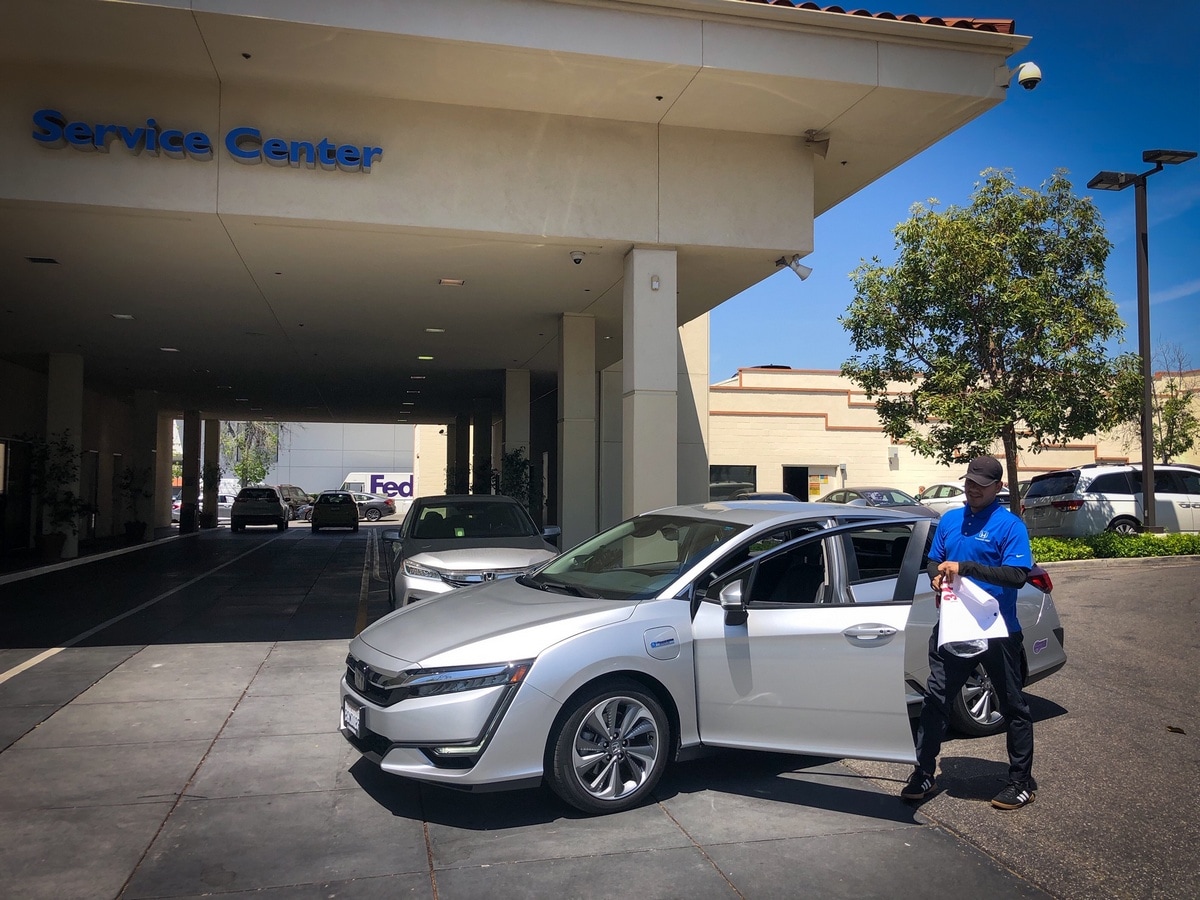
EV range is purely speed and congestion dependent
by Michael Harley on April 3, 2019
Current Odometer: 6,061 miles
Latest MPG: 142.71 MPG
Lifetime MPG: 88.64 MPG
Maintenance/Service Costs: $0
Time out of Service: 0 days
After three months, and more than 6,000 miles, I am beginning to understand how PHEVs work – especially when it comes to how they consume battery power.
Honda touts an EV-only range of 47 miles, but that is nothing but a ballpark estimate – range is speed and congestion (aka braking regeneration) dependent. If I jump on the highway without any traffic, my EV-only range is just over 30 miles. But, if I sit in bumper-to-bumper traffic, I have covered 56 miles without hearing the combustion engine firing up.
Ambient temperature also plays a big role on the state of the battery. In not-so-frigid Southern California, the vehicle would display an EV-only range of 38 miles in January (overnight temperatures in the mid-40s). This morning, with temperatures 20 degrees warmer, it showed a full charge range of 45.6 miles (however, it traveled 33.7 miles before the battery was exhausted because my average speed was more than 70 mph).
It will be interesting to see how the battery fares in our triple-digit summer.
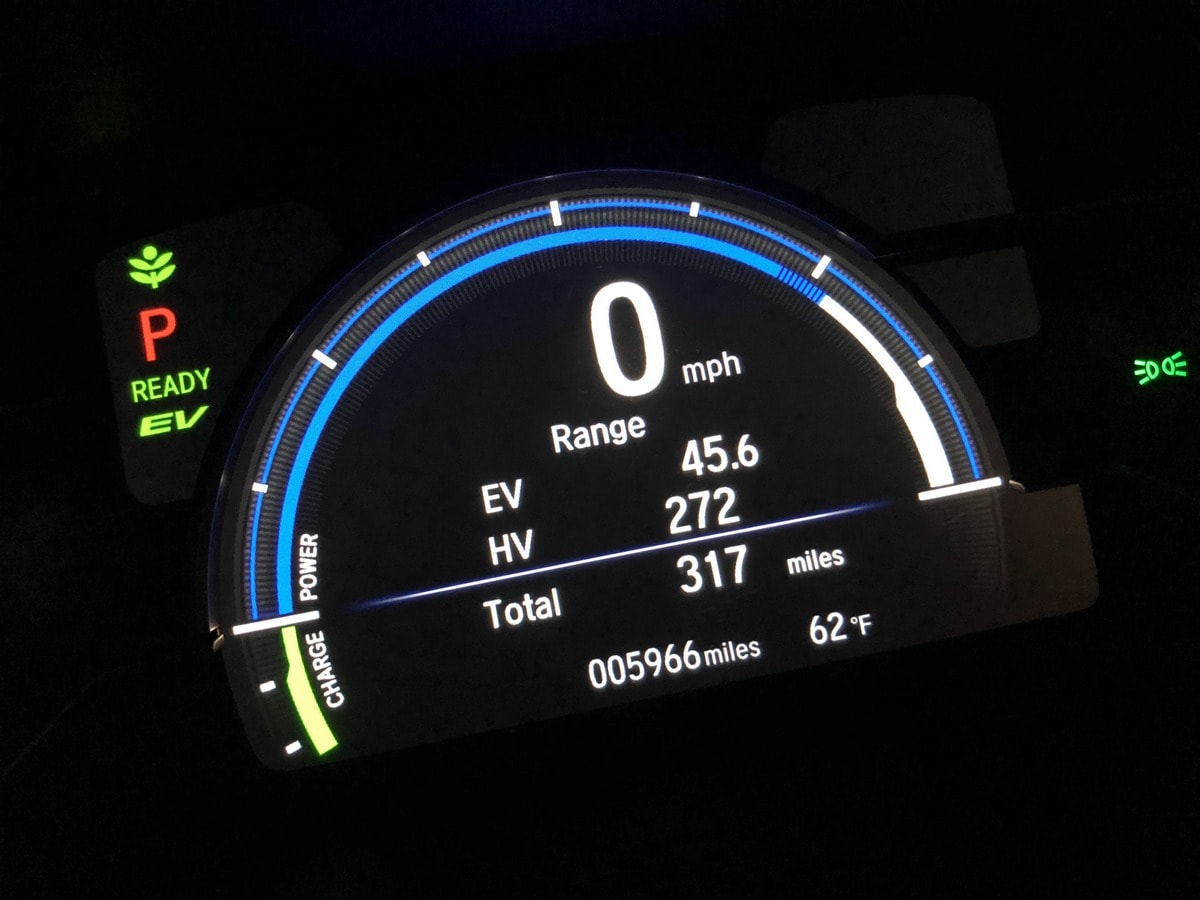
Flying buttress console isn’t the ideal leg rest
by Michael Harley on March 22, 2019
Current Odometer: 5,282 miles
Latest MPG: 74.77 MPG
Lifetime MPG: 85.04 MPG
Maintenance/Service Costs: $0
Time out of Service: 0 days
Honda’s interior designers should be complimented for the spacious and modern interior found within the Clarity because everyone who climbs into the five-place cabin remarks how comfortable and functional the passenger appointments are… apart from one minor annoyance. The unique flying buttress center console, which provides very useful storage beneath the digital shifter, widens as it touches the bottom of the dashboard (it is an aesthetic thing). In doing so, it becomes a very natural place to rest the driver’s right knee – especially if over six-foot tall. Unfortunately, the trim on each side of the console is hard, so it offers absolutely zero give in terms of cushioning. While it’s not an issue for an around-the-town trip, it does become an irritation as the hours pass during a long drive. And, for the record, another Honda Clarity owner in our office recently mentioned the identical complaint.
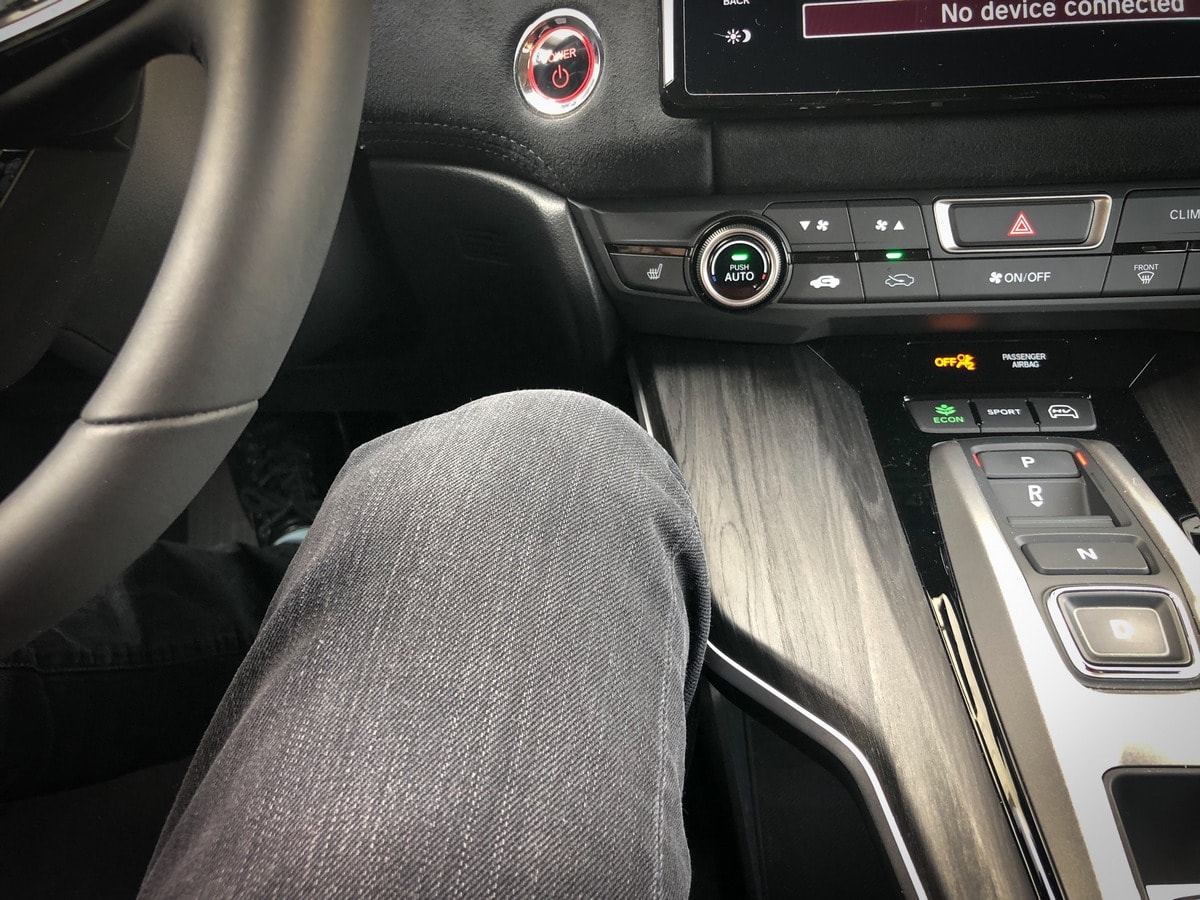
Learning to appreciate the push-button shifter
by Michael Harley on March 13, 2019
Current Odometer: 4,498 miles
Latest MPG: 74.08 MPG
Lifetime MPG: 84.61 MPG
Maintenance/Service Costs: $0
Time out of Service: 0 days
Honda equips all Clarity models with a push-button (PRND) shifter, a design that takes a futuristic leap away from the traditional lever-operated (PRNDL) shifters that have been fitted to most vehicles with a console-mounted transmission selector for the past several decades. Honda, and other automakers with this design, argues that this new digital interface may be more optimally placed on the dashboard because they aren’t burdened by a centrally-mounted cable that must be attached to the transmission housing – this also frees up valuable real estate on the center console.
Truth be told, I initially didn’t like the new design that Honda (and Acura) use as the combination of push and pull levers and buttons were anything but intuitive. Yet some automakers are now rolling out even less instinctive – make that bordering on dangerous – digital shift levers (RND) with a lever that always returns to center after being delicately bumped fore-and-aft (the 2019 Audi Q8, 2019 BMW 3 Series, and 2020 Porsche 911 come to mind).
After sampling those infuriating shift levers, which require looking for a small indicator on the dash for confirmation, I’ve decided that the Clarity’s illuminated push-button (PRND) shifter, with a very positive engagement action, is reasonably acceptable.
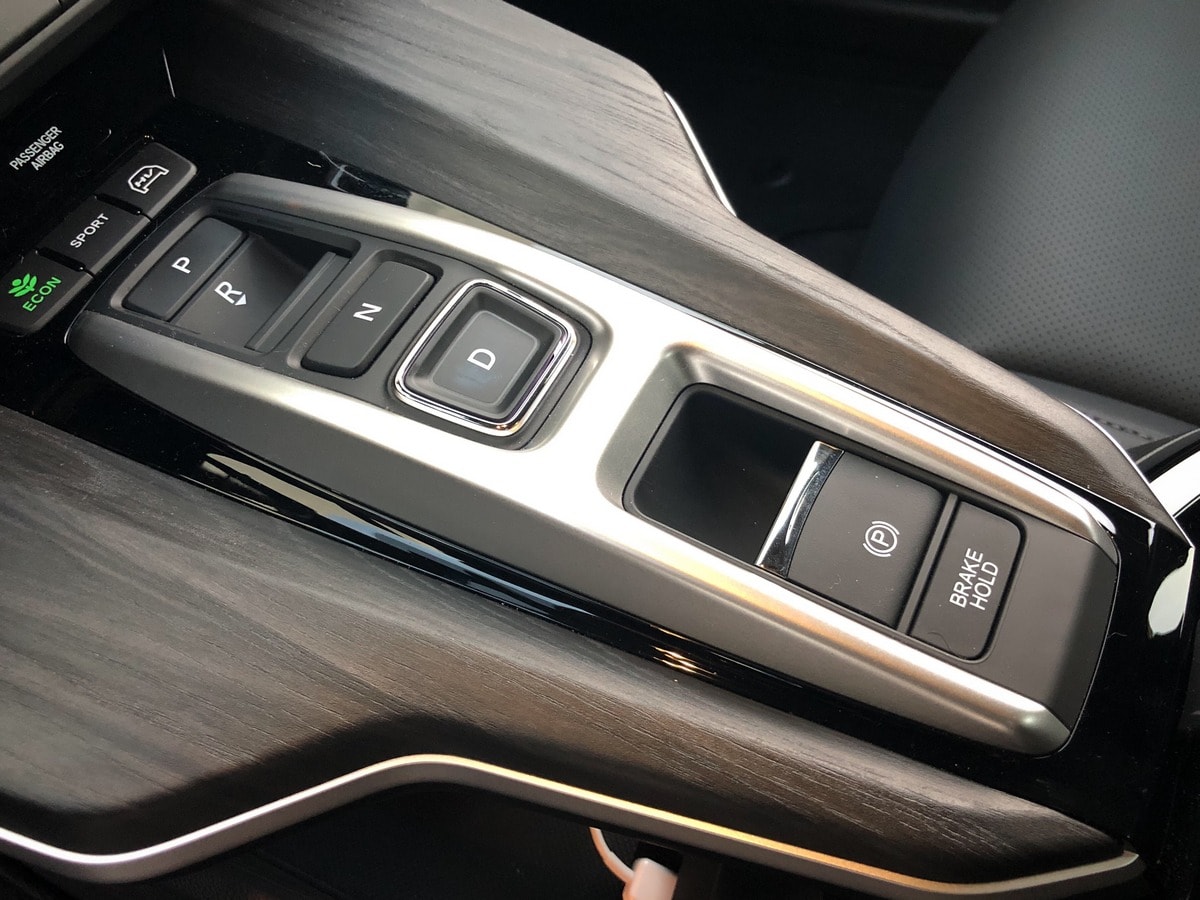
Always allow the Clarity to manage its powerplant
by Michael Harley on February 25, 2019
Current Odometer: 3,842 miles
Latest MPG: 80.81 MPG
Lifetime MPG: 86.02 MPG
Maintenance/Service Costs: $0
Time out of Service: 0 days
As mentioned in an update on January 27, Honda puts an “EV” button on the Clarity’s dashboard that allows the driver to manually manage the battery consumption — press it, and the state-of-charge is held. After noting that high-speed driving requires an awful lot of battery power (meaning my full battery charge is typically consumed within the first 30 miles of my commute), I decided to manually control the powerplant during one of my morning treks and “beat” the computer — it typically runs only on battery until it is depleted, which then starts the combustion engine. My own logic said it should be optimal to use the battery/motor in the city cycle and use the engine exclusively on the high-speed LA freeways. So, I did just that (manually toggling the EV button throughout the drive) and my fuel economy was 68.8 MPG — not bad, I thought. I then did the identical drive the next morning and allowed the Clarity to automatically manage its hybrid powertrain. It returned 78.2 MPG — the computer beat me by more than 10 percent! In retrospect, I’ve discovered that the Honda will shut down its combustion engine during coasting and when it’s not needed at low speeds (even though the battery shows that it is depleted, there is still a minimum charge remaining for those periods). Lesson learned: Always allow the Clarity to manage its powerplant.
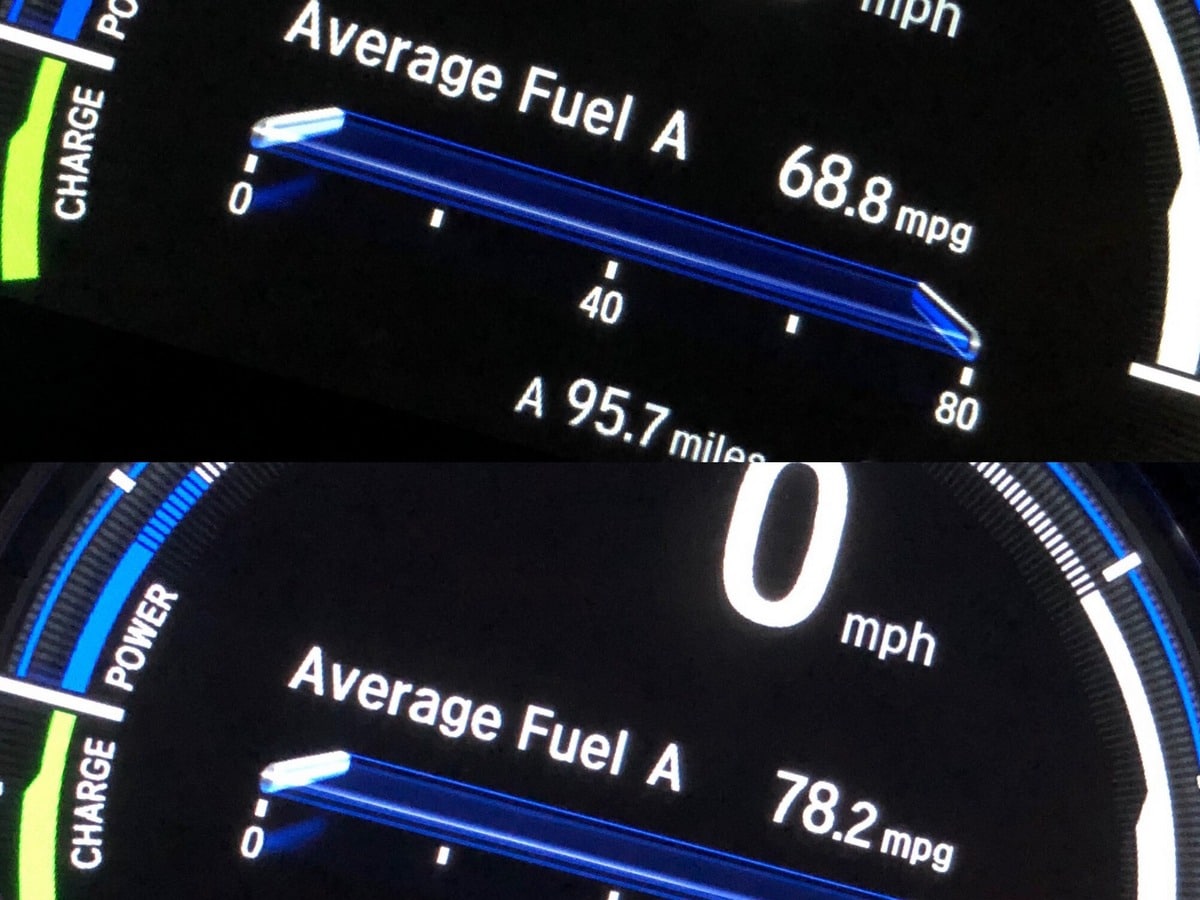
Enjoying the silence
by Michael Harley on February 15, 2019
Current Odometer: 2,839 miles
Latest MPG: 107.03 MPG
Lifetime MPG: 92.21 MPG
Maintenance/Service Costs: $0
Time out of Service: 0 days
Everyone knows that electric vehicles make only minimal noise while they are operating – electric motors are nearly silent. But this silence is often a downside at highway speeds as nearly all EVs are prone to annoying wind and tire noise that makes its way into the cabin (these sounds are usually masked by rumbling exhaust notes in combustion vehicles). Honda’s engineers have gone to great lengths to minimize the noise penetrating the cabin of the Clarity. First, they paid close attention to aerodynamics to ensure that buffeting around the windshield’s A-pillar and external mirrors was minimal. Second, they isolated the suspension system and put additional acoustic insulation inside the wheel wells. Lastly, they laminated the glass on the front doors – it is literally two layers of tempered glass with a layer of sound deadening material sandwiched in the middle. The results of these additional efforts are nothing short of amazing – the Honda Clarity PHEV is one of the quietest vehicles that I have ever driven.
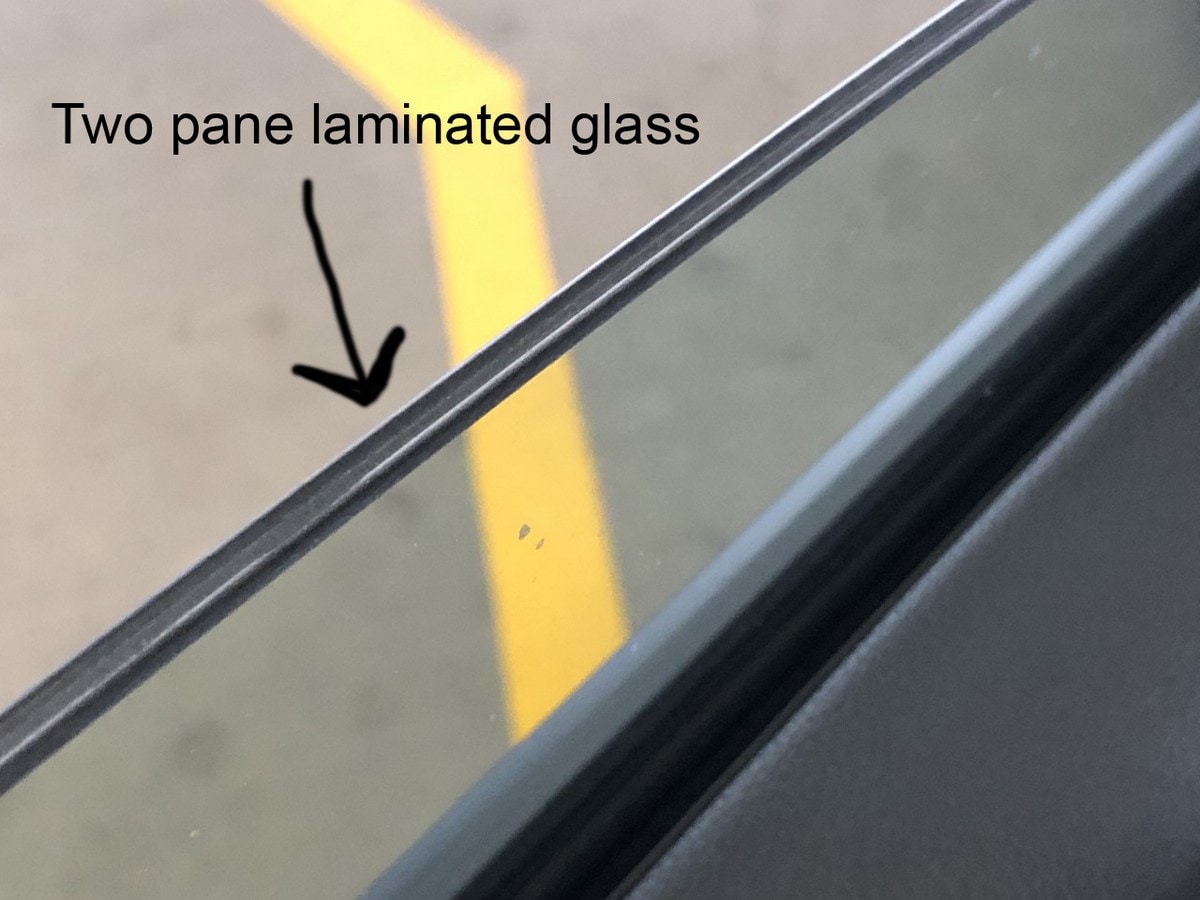
Fuel economy in a PHEV is all over the place
by Michael Harley on February 5, 2019
Current Odometer: 1,740 miles
Latest MPG: 76.91 MPG
Lifetime MPG: 87.05 MPG
Maintenance/Service Costs: $0
Time out of Service: 0 days
Note that I earned “only” 76.91 MPG on my most recent tank of fuel with our long-term Clarity. Considering that the tank immediately before this one returned an amazing 156.50 MPG, my initial thought was that something was broken. Yet everything with this Honda is perfect (right down the tire pressures, which I check weekly).
As it turns out, this is simply the way PHEVs deliver fuel economy; it is 100-percent based on the segment distance traveled on each trip.
If I stay home for a long weekend (no commute), plugging the Clarity in each time it’s in my driveway, I won’t use the combustion engine at all. I can go five or six full days, putting 80 miles a day on the Honda, without consuming one drop of gasoline. However, my morning commute always requires the engine to consume about a gallon of fuel, and that hurts fuel economy.
Some people may own a Clarity and never use gasoline. Others, like myself, will use it regularly. Even so, earning an average of nearly 77 MPG on a tank of fuel is jaw-droppingly impressive!
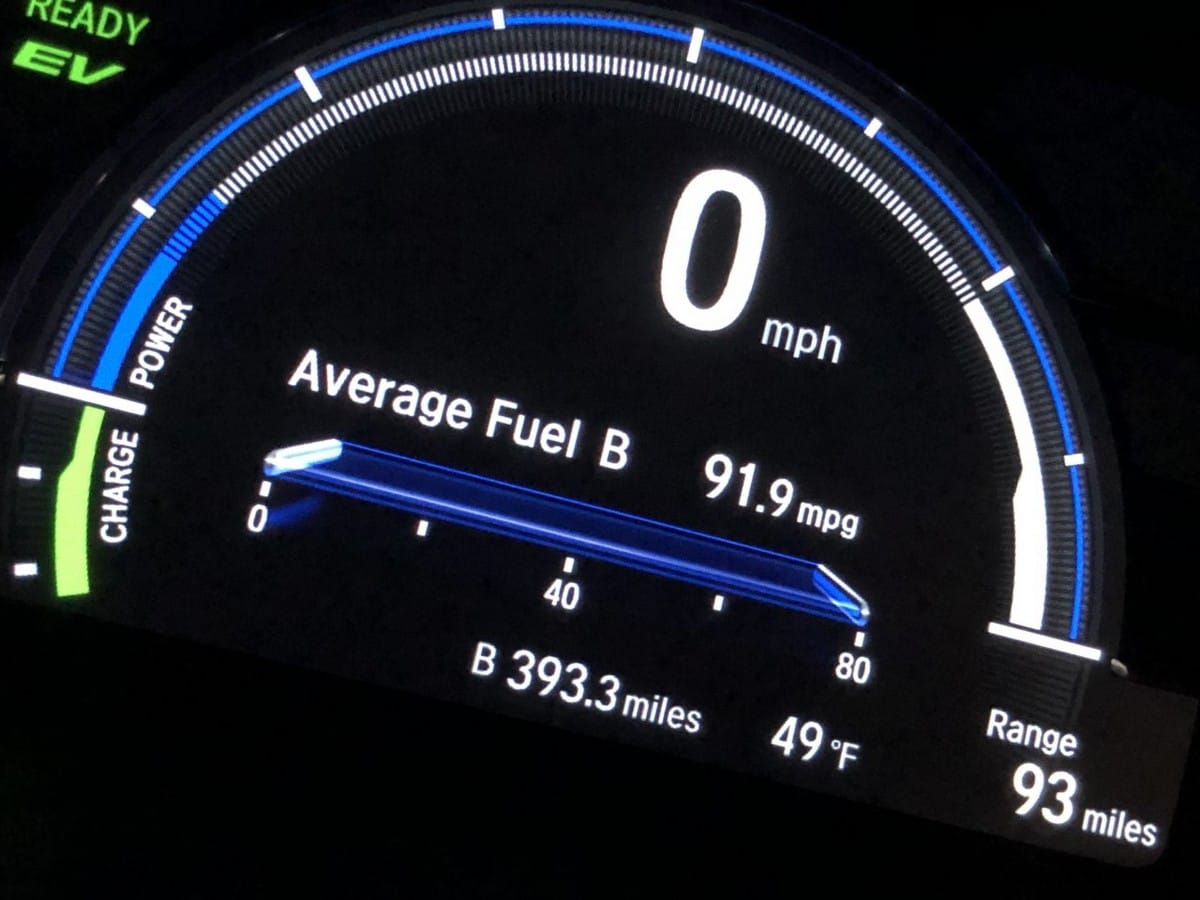
EVs do not like high speeds
by Michael Harley on January 27, 2019
Current Odometer: 971
Latest MPG: 120.75 MPG
Lifetime MPG: 79.56 MPG
Maintenance/Service Costs: $0
Time out of Service: 0 days
In typical PHEV manner, the Honda Clarity (in default mode) consumes the charge in its battery pack before igniting the combustion engine in search of more electricity for propulsion. That said, the EPA rates the Honda’s battery pack at “47 miles,” which leads most to believe that the Clarity will cover 47 miles in EV mode before needing to consume gasoline – yet this isn’t the case. On my very early morning 98-mile commute across the LA Basin, which has me cruising congestion-free with a flow of vehicles at upwards of 80 mph, I am lucky to get 30 miles out of the battery (the complete absence of traffic means there is zero regenerative braking). However, if I leave the office during evening rush hour I have seen 52 miles of range in EV mode (credit near-continuous regenerative braking and greatly reduced aerodynamic drag). The lesson learned is that electric-only propulsion is wonderful around town and at low speeds when regenerative braking is involved. At high speeds you are doing nothing but fighting the wind and consuming electrons at an alarming rate. Yet, in a rather brilliant move, Honda’s engineers have put a little button on the dashboard (labeled “HV”) that allows the driver to “save” the battery’s charge for when it is optimal. Stay tuned, as I am going to manually control my power consumption on an upcoming commute.
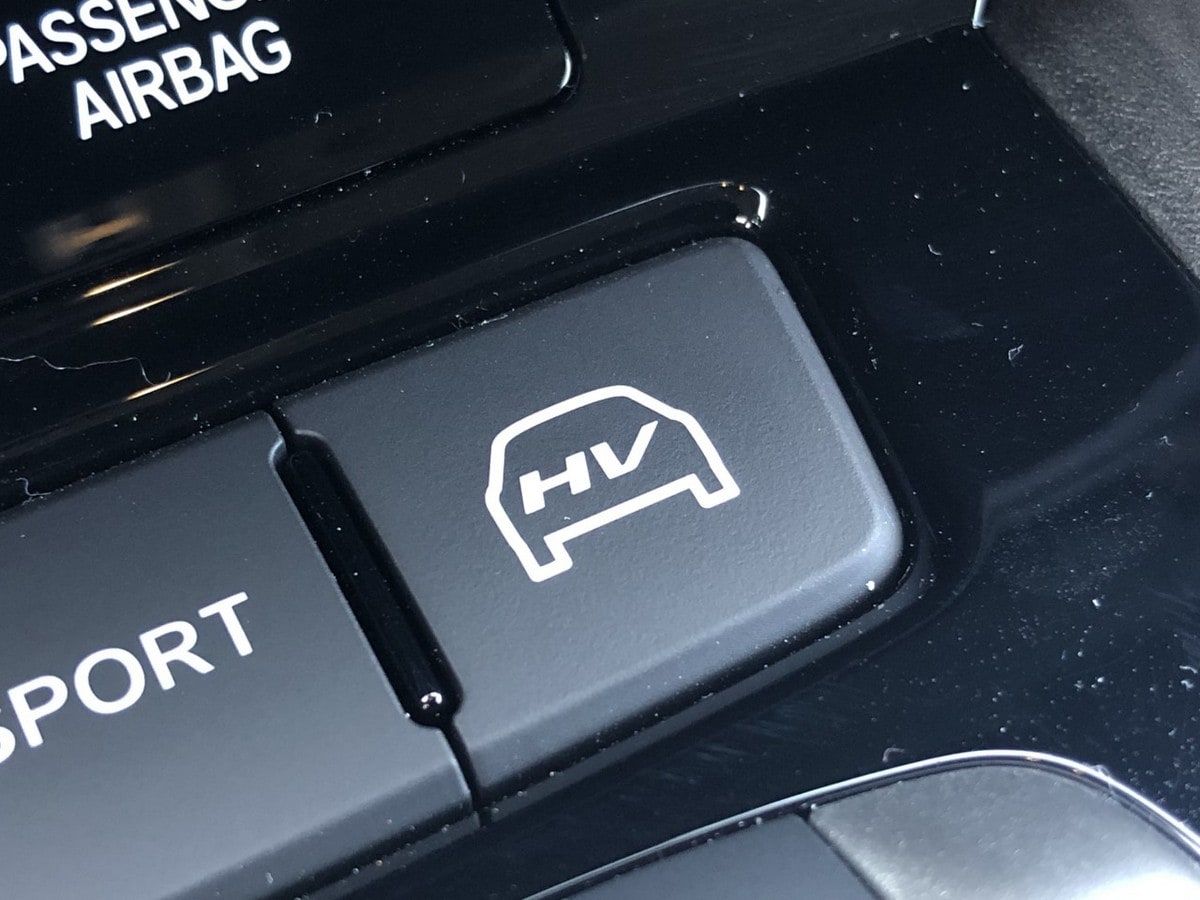
Welcome home – meet my Level 2 charger
by Michael Harley on January 20, 2019
Current Odometer: 276 miles
Latest MPG: New
Lifetime MPG: New
Maintenance/Service Costs: $0
Time out of Service: 0 days
It is possible, and completely acceptable, to plug the Honda Clarity PHEV into a standard 120-volt wall outlet and recharge its battery overnight. This “Level 1” charging is how I’ve been charging electric press vehicles at my home for many years. Moving up to a more powerful 240-volt “Level 2” charger, which is also home consumer friendly, completely changes the game. A Level 2 system delivers charging speeds that are about five times faster, which means PHEVs like the Honda Clarity PHEV may be brought back to a full battery state in fewer than three hours. I’m convinced that an EV owner needs to make the small investment (about $1,000 – after rebates and incentives) for a dedicated Level 2 charger at their home, so I had one installed in my garage over the holidays. I selected a ChargePoint Home unit, with a 25-foot cord, as it is easy to obtain (Amazon) and it offers a smartphone app that allows the user to schedule and monitor the charging process. This means I can schedule the Clarity to only charge during times when electricity is the least expensive – taking advantage of its shorter charge time to use those discounted windows.
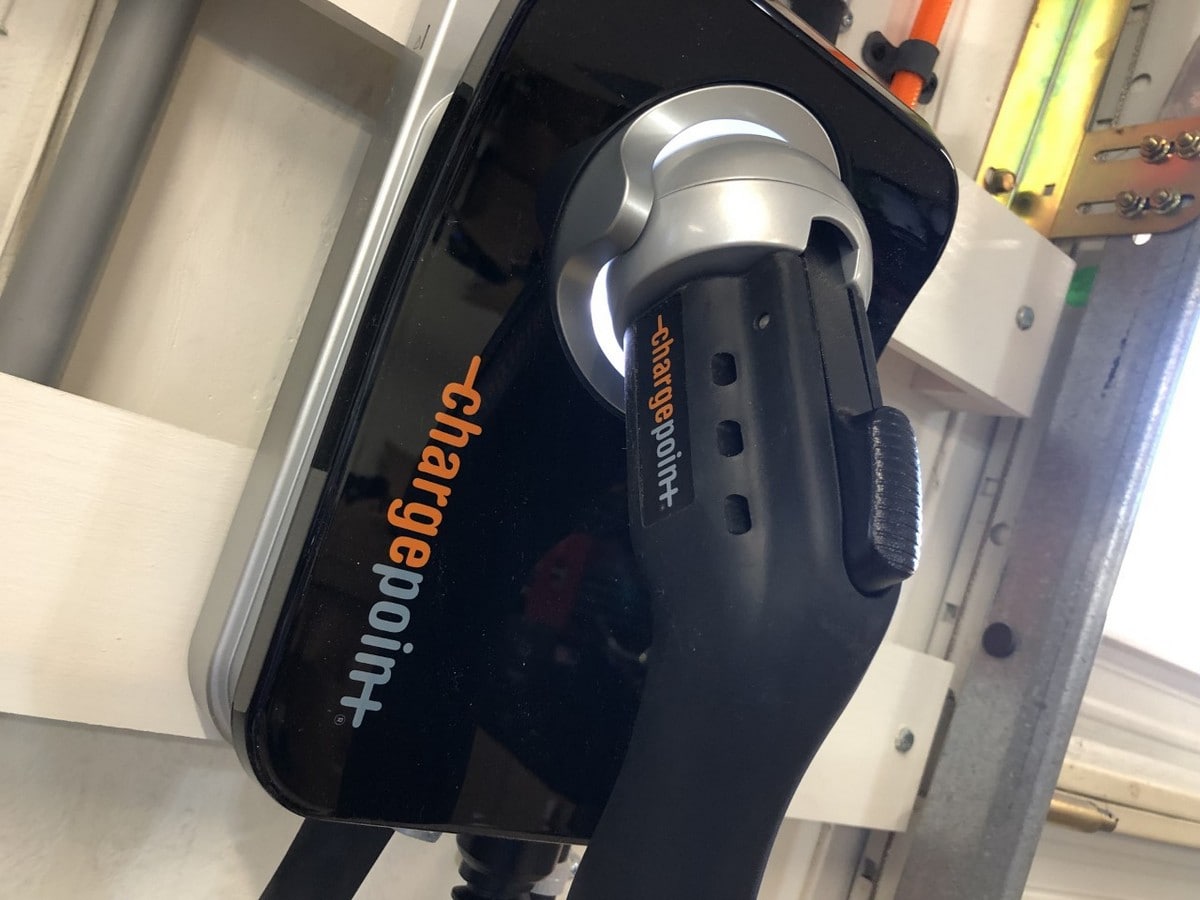
Introduction
by Michael Harley on January 15, 2019
A 2019 Honda Clarity plug-in hybrid electric vehicle (PHEV) joined the Kelley Blue Book fleet this month, promising a year of efficient EV-operation and hybrid fuel economy. The innovative family sedan boasts an innovative aluminum-intensive chassis and one of the most sophisticated powertrains available on the market, which is only part of the reason it won the Kelley Blue Book “Electric/Hybrid Car Best Buy of 2019” award.
Aerodynamic exterior and a luxurious interior
“Futuristic and functional, distinctive and efficient.” That’s how Honda describes the Clarity. Dimensionally very close to the Honda Accord sedan, the exterior of the Clarity is extremely aero focused — distinctive styling has been engineered to help the PHEV “fulfill its mission as a tech-savvy, energy-efficient and image-leading vehicle,” says the automaker. The low-drag design features air intakes ahead of each wheel to create “air curtains” that reduce turbulence across the wheel openings, a full belly pan to reduce drag, and partial tire coverings over the rear wheels to keep the air moving smoothly and freely. It goes without saying that the Clarity looks nothing like the Accord. In fact, the Clarity looks nothing like anything else on the road.
The passenger cabin has been designed to accommodate four six-foot tall adults, or five in a pinch, with top-rate materials, fit, and finish — think Acura levels of premium appointments. The driver faces a modern digital instrument panel with a prominent power meter taking center stage. There is a battery state-of-charge display on the left and a fuel tank gauge on the right. The 8-inch touch screen floating on the center of the dash is well positioned, but it lacks a volume knob — it will be interesting to see how that goes (for the record, Honda has addressed this and brought the crucial knob back to many of its models). The transmission is shifted by a button stack on the middle of the center console, which rests atop a nice flying buttress — a shifter configuration that was first introduced by Acura. There are generous cup holders and storage space for phones beneath the flying buttress.
Kelley Blue Book’s long-term Clarity is a Touring model, in Solar Silver Metallic, which is the range-topping trim. In addition to the standard features such as full-LED lighting, Honda Sensing safety equipment, and an 8-speaker (180-watt) audio system, it adds navigation, leather upholstery, and power seats with a memory function.
Sophisticated gasoline-electric hybrid powertrain
The Clarity utilizes two-motor hybrid technology that combines a 1.5-liter Atkinson-cycle in-line 4-cylinder combustion engine, a starter/generator motor, and a 181-horsepower AC synchronous traction motor – total system power is a solid 212 horsepower. The electrical energy is stored in a 168-cell lithium-ion battery pack located under the passenger floor, which is rated at 17-kilowatt hour (kWh). The combustion engine sips from a 7-gallon fuel tank, which is under the rear seat. While the fuel tank requires nothing more than common regular unleaded gasoline, Honda says the Clarity’s battery is optimally charged with a 240-volt Level 2 charger in about 2.5 hours. It may also be replenished with a standard 120-volt wall charger overnight.
Under most conditions, the Clarity PHEV runs off its electric motor that is driving the two front wheels. But, if the driver doesn’t ask for aggressive acceleration, the vehicle will run on nothing but electricity for speeds upwards of 100 mph. Above that, the combustion engine joins the party to deliver even more power. Once the battery is depleted – the Clarity drives up to 47 miles on EV alone – the engine fires up to generate electricity for the traction motor and propel the vehicle.
And this is where things get more complex. Honda doesn’t use a continuously variable transmission (CVT) to link the engine to the wheels, like most other automakers. Instead, the 1.5-liter engine is connected to the driving wheels through a simple single-speed gearbox that is lighter and much more efficient than a CVT. Based on speed and load, the engine will drive the wheels alone or ask for assistance by sending electricity to the traction motor for additional propulsion.
Three power modes offer versatility, flexibility, and efficiency.
Honda gives the driver quite a bit of control when it comes to managing the powertrain, but most of the time it switches seamlessly between its propulsion modes automatically. If there is a charge remaining in the battery pack, the vehicle will operate in EV Drive mode – the engine is off and decoupled from the transmission to reduce friction. When the battery is near-depleted, the Clarity will switch to Hybrid Drive mode. Propulsion comes from the traction motor, which is being supplied power from the gasoline engine turning the generator (excess power is stored in the battery). At medium or high cruising speeds, the Honda switches to Engine Drive mode. In this configuration, a lock-up clutch allows the engine to propel the vehicle.
While there is rarely a need to override the computer’s chosen drive mode, Honda gives the vehicle operator three driver-selectable operating modes – Normal, Econ, and Sport. Each is self-explanatory. A fourth mode, which is called HV mode, allows the driver to preserve the battery’s state of charge, or even charge the battery while the sedan is driving.
According to the EPA, the Clarity PHEV earns an all-electric 110 MPGe combined fuel economy rating. Its gasoline-only rations are 44/40/42 MPG (city/highway/combined). In theory, the combination of a 47-mile electric and an approximate 300-mile combustion range should add up to about 350 miles between fill-ups. However, our experience shows that most plug-in hybrids deliver much greater range when they are charged each time they are parked.
Our year-long test and Clarity pricing
The 2019 Honda Clarity PHEV joins a four-person family household, where it will be used as a daily driver for carpools, running around, and hauling the family all over the LA Basin. And, it will be forced to endure a two-hour drive to work — 98 miles each way. This should present an excellent opportunity to see how well the Clarity delivers comfort and efficiency during the daily trek.
The 2019 Honda Clarity PHEV starts with a base price of $34,320 (including $920 destination), but our long-term 2019 Honda Clarity PHEV Touring has a base price of $37,520 (including $920 destination).
